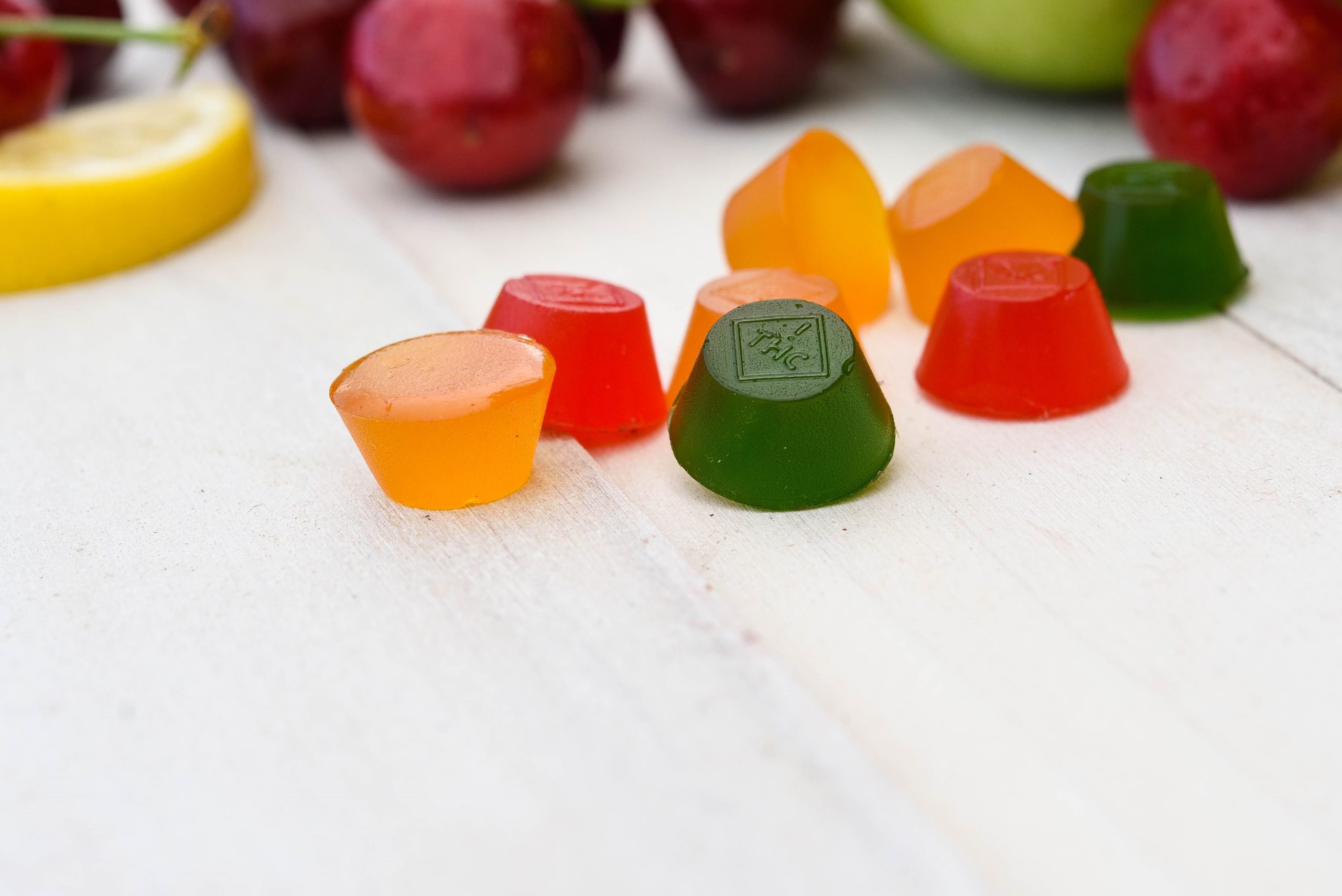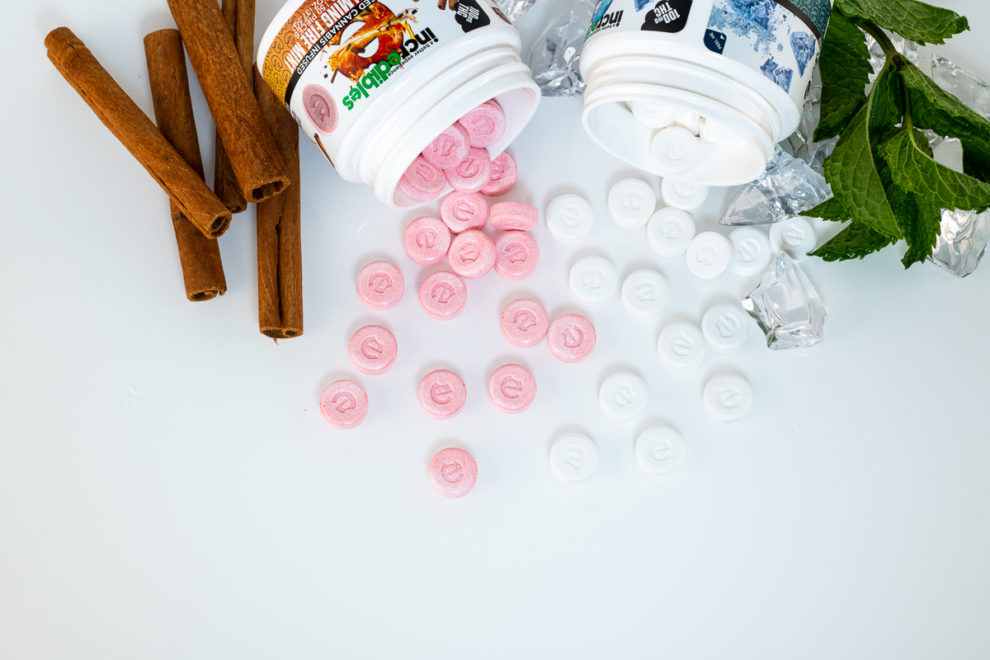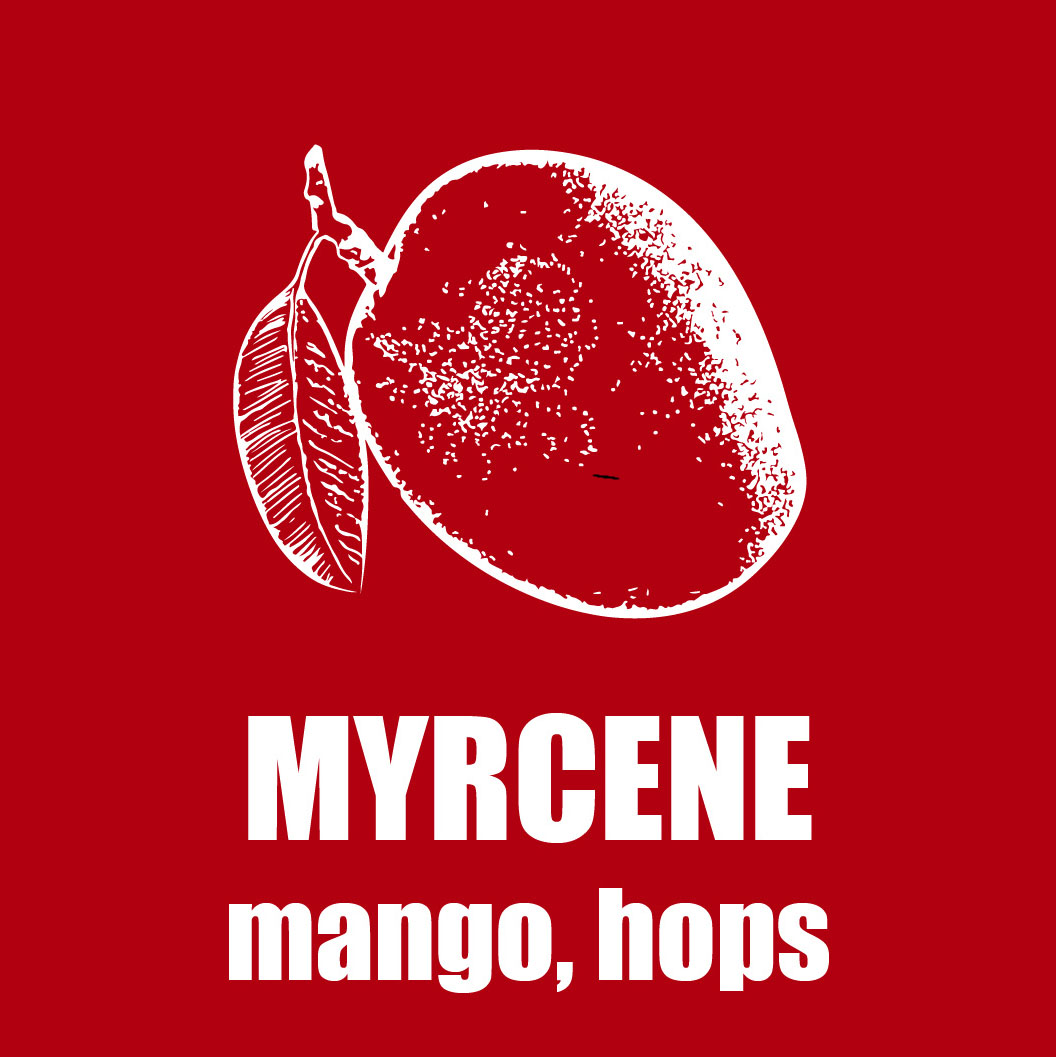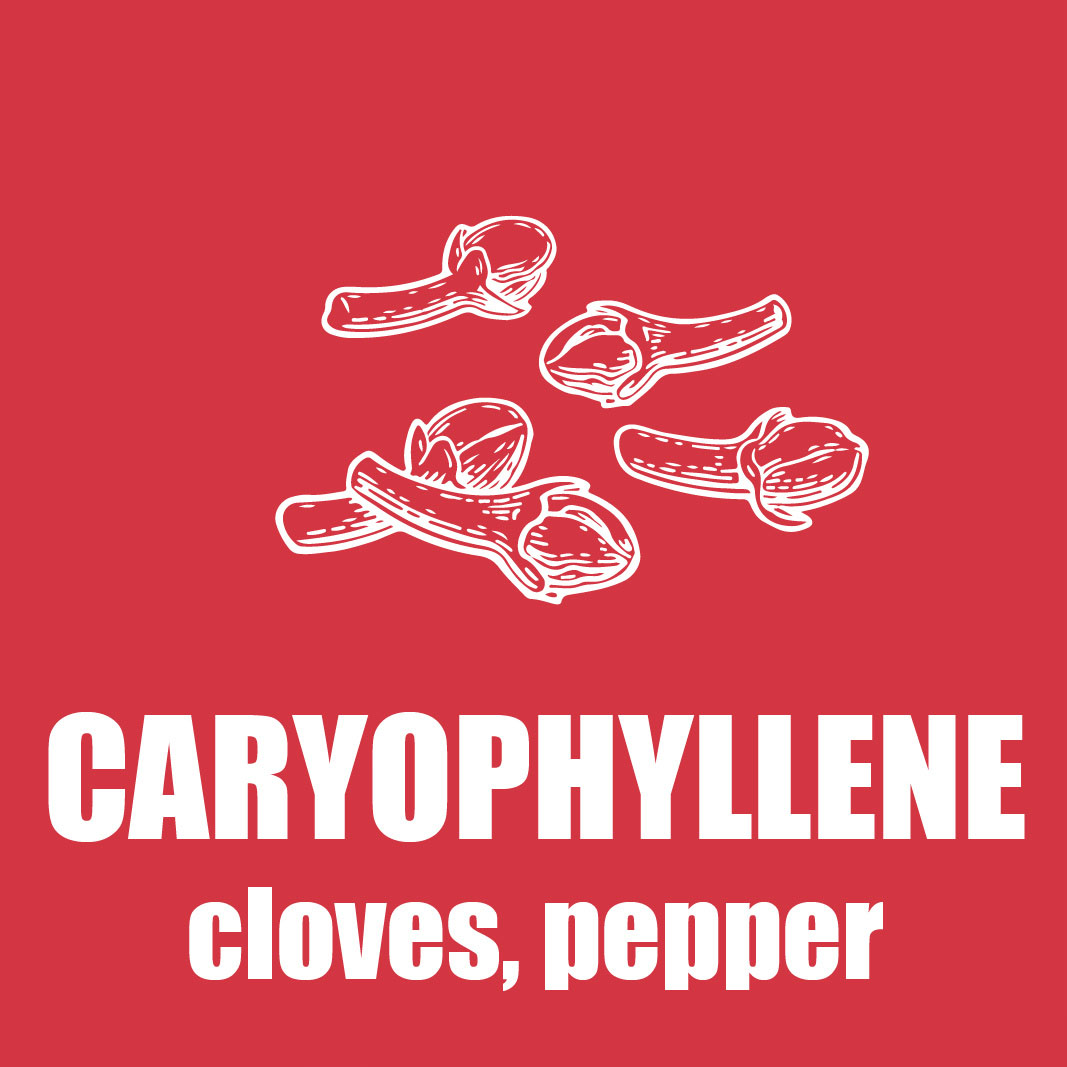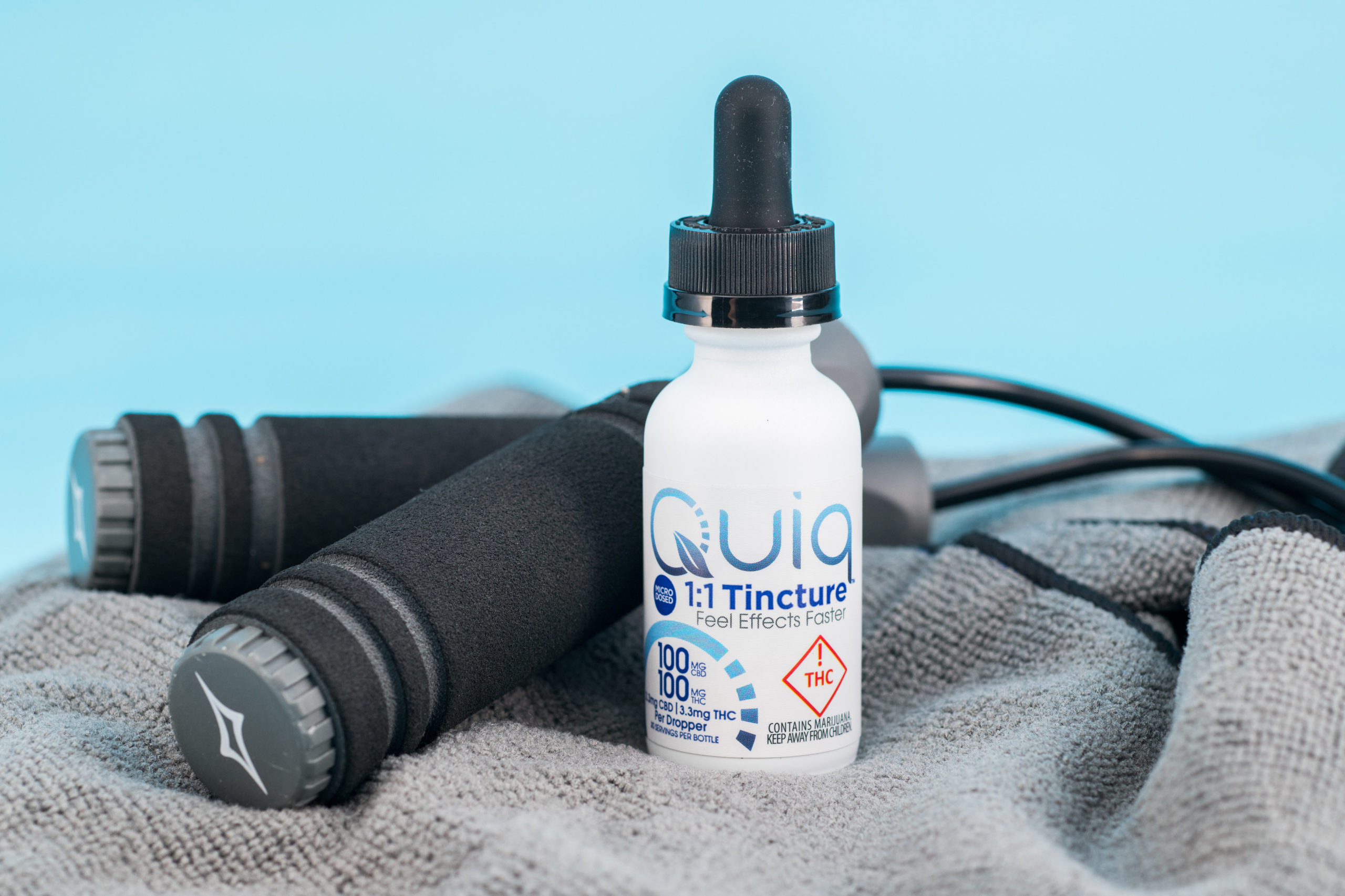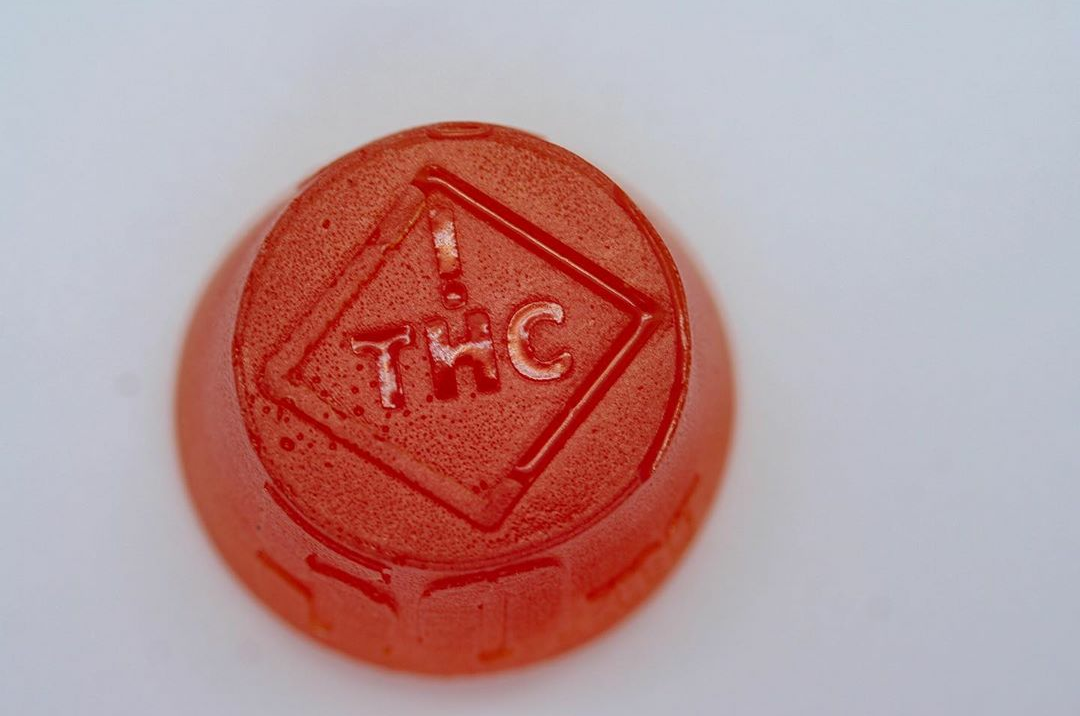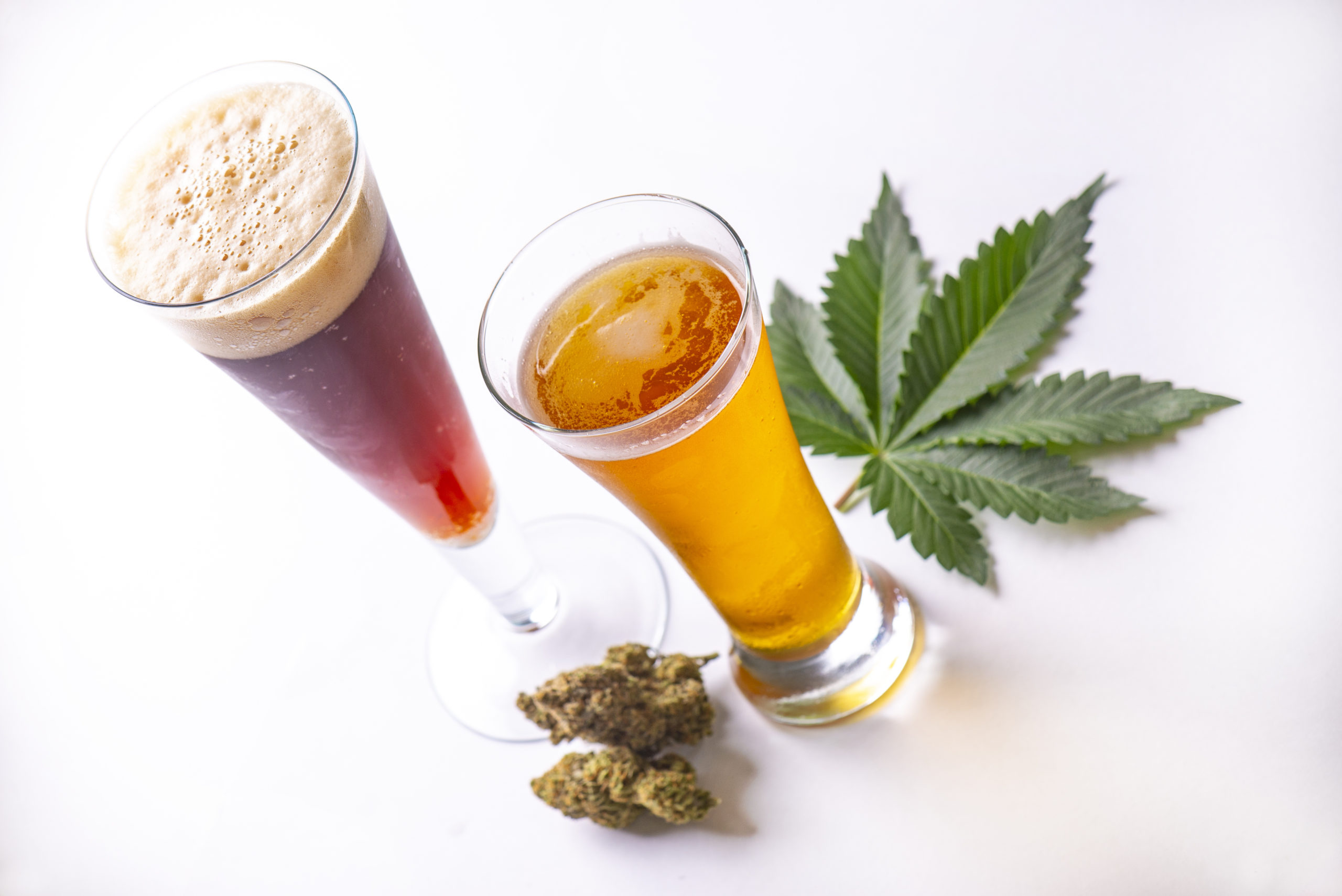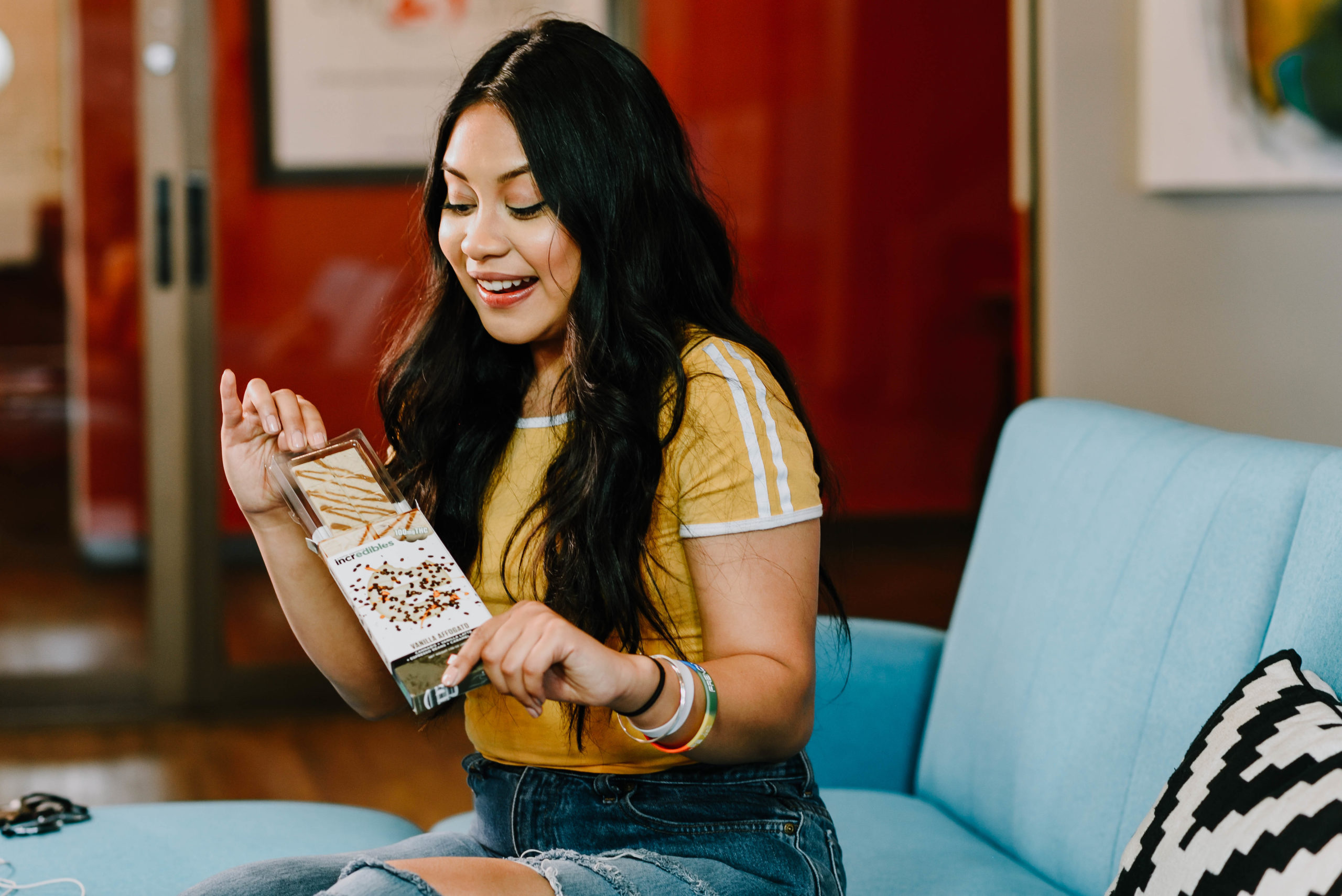The Five Most Common Types of Edibles Found in Dispensaries
From ancient to modern times, edibles have been one of the classic ways to consume cannabis. Edibles are food and drink products infused with cannabis flower or extracts containing THC, CBD, or both, and can be a delicious alternative to smoking and vaping. Nearly any food that contains oil, dairy, sugar or flour can be turned into an edible; and the recent emergence of water-soluble extracts has allowed for even more edible options, such as beverages. There’s really something for everyone, from unsweetened and sweetened baked goods to pills, and edible makers are continuously innovating their offerings.
Every producer of edibles has their own favorite recipes and processes, which means the flavors, textures, cannabinoid ratios, effects, and potencies can all differ. Depending on the type of edible you choose and your personal metabolism, the time it takes for the THC to enter your bloodstream, and for you to feel the psychoactive effects, could be anywhere between 30-90 minutes (or longer). However, more and more edible makers are beginning to offer fast-acting options for those who don’t want to wait very long to get elevated. These products typically kick in between 15-25 minutes but can take longer.
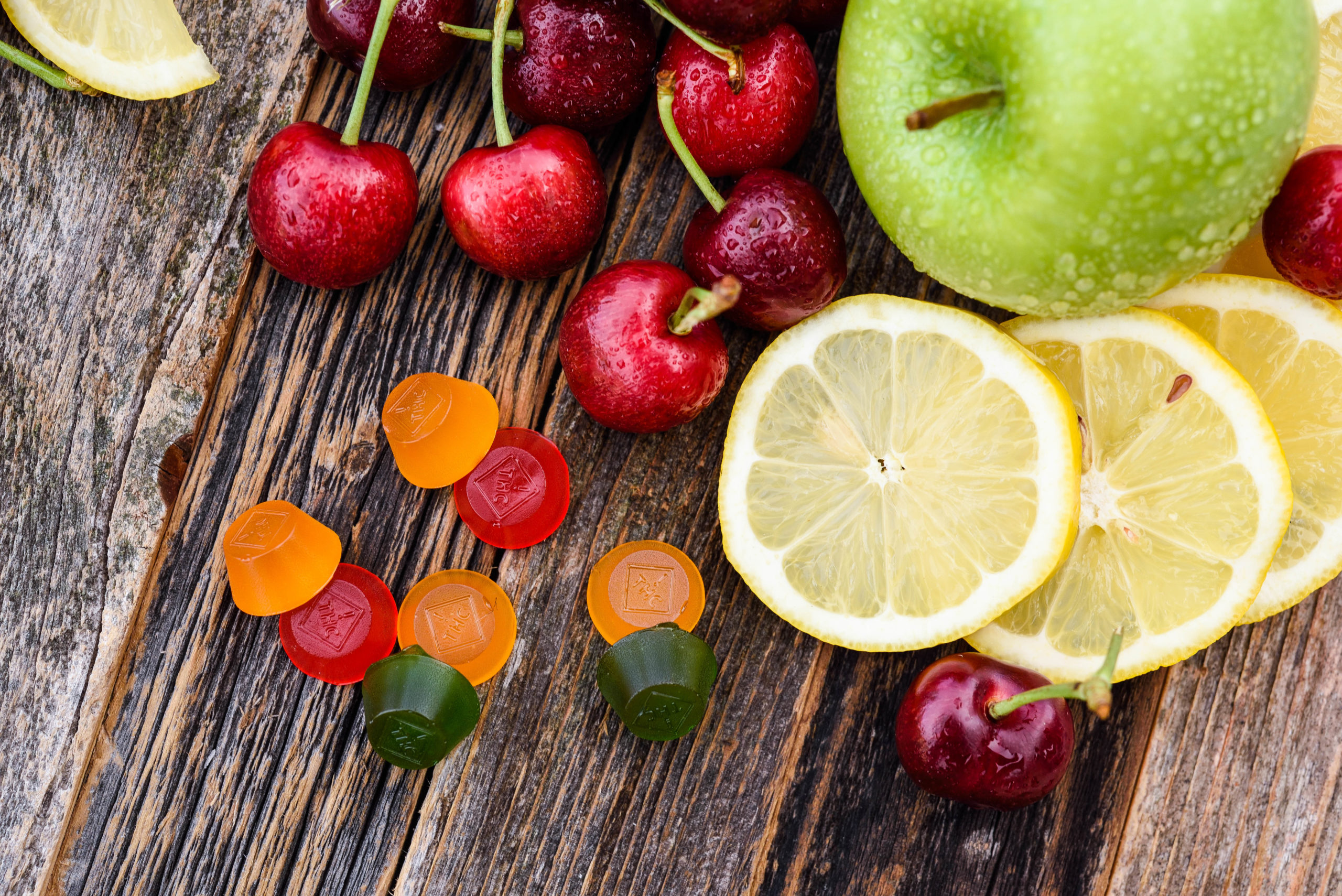
Most states have similar regulations regarding the amount of THC that can be infused into a single product for recreational use, which in Colorado, is 100 milligrams, often divided into ten 10mg servings or twenty 5mg servings. Medical regulations typically allow a higher amount infused into each product. Micro-dosing, commonly considered as taking a 2.5mg dose of THC, is rising in popularity as people are looking for a more functional high. Some makers now offer their products divided into 2.5mg doses to cater to this market.
Below, we’ll cover the five most commons types of edibles found in dispensaries to help you with deciding what to try next time you head to the store.
Gummies
Gummies are the most popular edible you can find, consisting of cannabis oil (usually flavorless distillate), sugar, gelatin or pectin, coloring and flavoring. For those who have a vegan diet or want to stay away from gelatin, an increasing number of producers are now offering vegan gummies, so they’re becoming easier to find.
Gummies are often marketed as sativa, indica, or hybrid, and the resulting effects are energizing, calming, or somewhere in between, respectively. Typically, there are additional terpene or botanical ingredients to help steer these effects. One example of this is including myrcene and/or chamomile for a relaxing effect. You’ll also find both regular and quick-acting gummy options.
Chocolates
Cannabis chocolates are the next most popular (and delicious!) option. The robust flavor of cannabis oil is mostly masked by the rich flavor profiles of the chocolate it’s infused in. You’ll find all sorts of variations including dark, milk and white chocolate bars and truffles, with or without fillings such a peanut butter or caramel. Most bars are scored in ten 10mg squares, and truffles in 5mg or 10mg pieces, so you can dose yourself with precision. You’ll find mostly regular onset options, although quick-acting options are out there too.
If you love chocolate, you’ll have an easy time finding it in so many other edible products, so be wary about going to the store hungry!
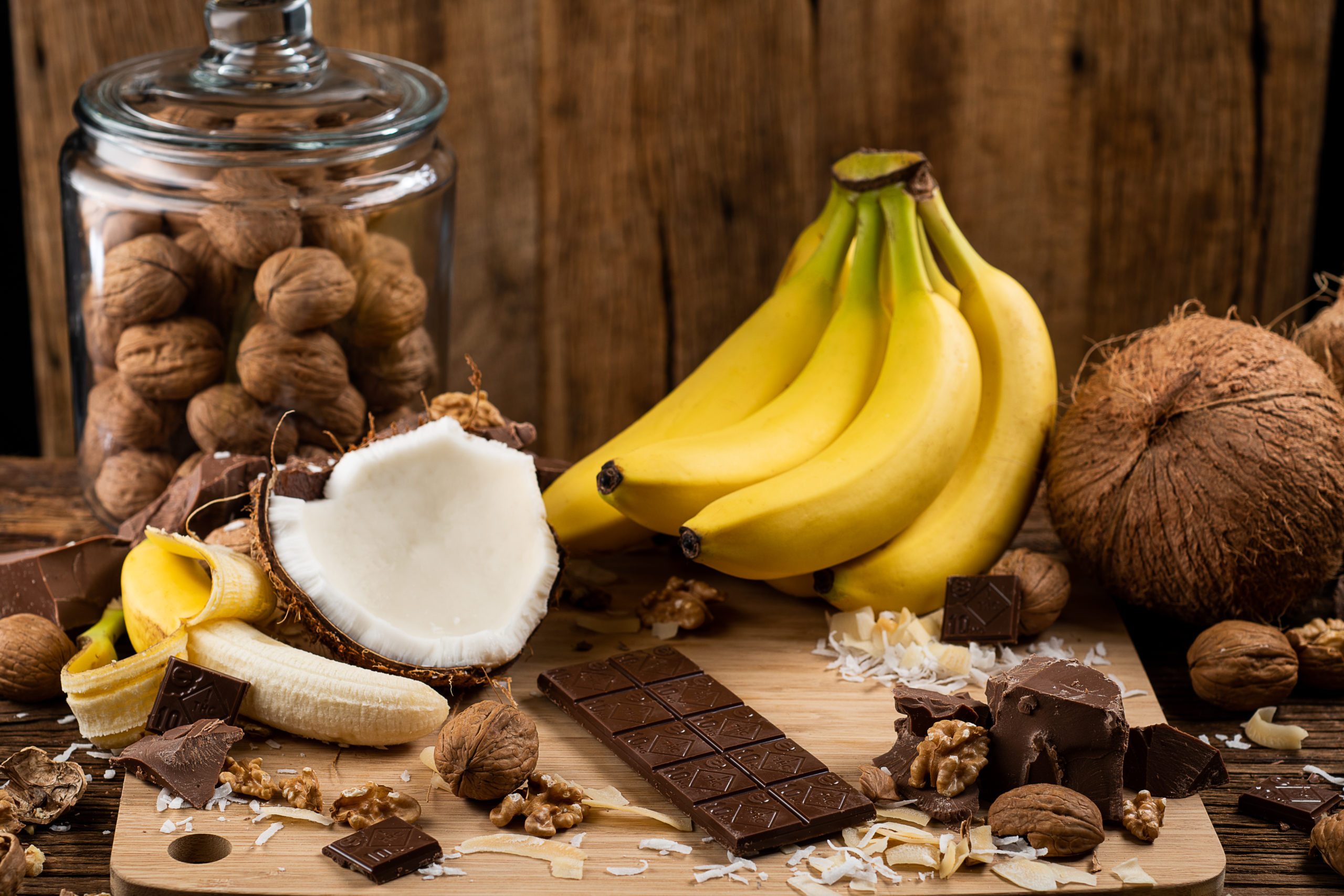
Beverages
Due to the aforementioned introduction of water-soluble cannabinoids, you’ll now find a wide array of beverages, such as soda, energy drinks, teas sold in bottles or a box of tea bags, and infused waters both still and carbonated. These are mostly sold as single servings, such as a can or bottle containing 10mg of THC or 5mg THC and 5mg CBD. However, some drinks will have dosing caps to pour off a single dose if the entire bottle contains several servings. You’ll find both regular and quick-onset options.
Tinctures
Tinctures are cannabis-infused alcohol formulas presented in dropper-top bottles. You’ll find many products labeled as tinctures that include MCT oil or glycerin in place of alcohol. Tinctures enter the bloodstream sublingually via the sublingual artery when held for 15 seconds or longer under the tongue. Some may be flavorful and sweet, while others may be virtually flavorless. Flavorless tinctures are versatile since you can take them orally or add them to recipes, smoothies, etc. High Times offers a great guide on navigating the world of tinctures.

Pills
As cannabis legalization continues to expand across the country, this category is rising in popularity. It’s a familiar delivery method that has very few additional ingredients and allows for very precise dosing. It is especially popular among the older generation, and those who cannot have sugar. Similar to other categories of edibles, there are both regular and fast-acting options available, as well as energizing, relaxing options and hybrid options.
Within all these types of edibles, you’ll find options with various ratios of CBD to THC available, indicated by 1:1, 2:1, 5:1, 20:1, etc. As you experience the effects of different products, you’ll come to learn your preferences. If you move to another state from Colorado, let’s say, your favorite brands may not be available due to the fact that cannabis is not legal nationally as of yet, so if you know your preferred ratio, you can use that information as a basis on choosing new products. (Brands do love hearing from their customers, so let them know if you can’t find them!)
Know that not all edibles are psychoactive. There’s a large market of full- and broad-spectrum CBD products in all the forms mentioned above which contain .03% THC or less. There are also products containing just CBD isolate, meaning there are no traces of other cannabinoids present.
One last note, a great reminder pertaining to edibles – start with a low dose to first gauge how your body responds, and then wait patiently. If you feel you’d like an additional amount, wait at least another hour or more so you don’t end up taking more than you’d like.
With all these options, what are you going to choose? Find the type edibles you most want to try at your local dispensary by browsing our online menu.
Everything Consumers Need to Know About Cannabis Vapes
Vaping is a relatively new delivery method for cannabis that has risen in popularity over the last several years. Vaping heats cannabis without igniting it, creating a vapor to disseminate cannabinoids and terpenes into your bloodstream through a vaporizing device that generates a fine mist. This makes them different from traditional smoking devices like pipes and bongs, which deliver smoke into your lungs.
The vaping sector of the cannabis industry has been developing quicker than the scientific community has been evaluating the potential health risks of both formulations and devices. As a result, it’s important to learn all you can so you can make the best decisions for yourself. If you take one thing away from this guide, it should be to always choose products from the legal, regulated market. Here’s everything consumers need to know about cannabis vapes.
Types of Vaping Devices
Vaping devices come in many forms, such as vape pens, e-cigarettes, dab pens, and desktop vapes. Although some devices allow you to consume both concentrates and flower, most are designed to be used exclusively with one or the other. Depending on your lifestyle, you may prefer one type of device over another. For example, if you’re always on the run, you may prefer a vape pen that you can keep in your pocket or purse. If you only consume at home, you may prefer a desktop device, such as the famous Volcano, to which a study the NIH published gave a stamp of approval.
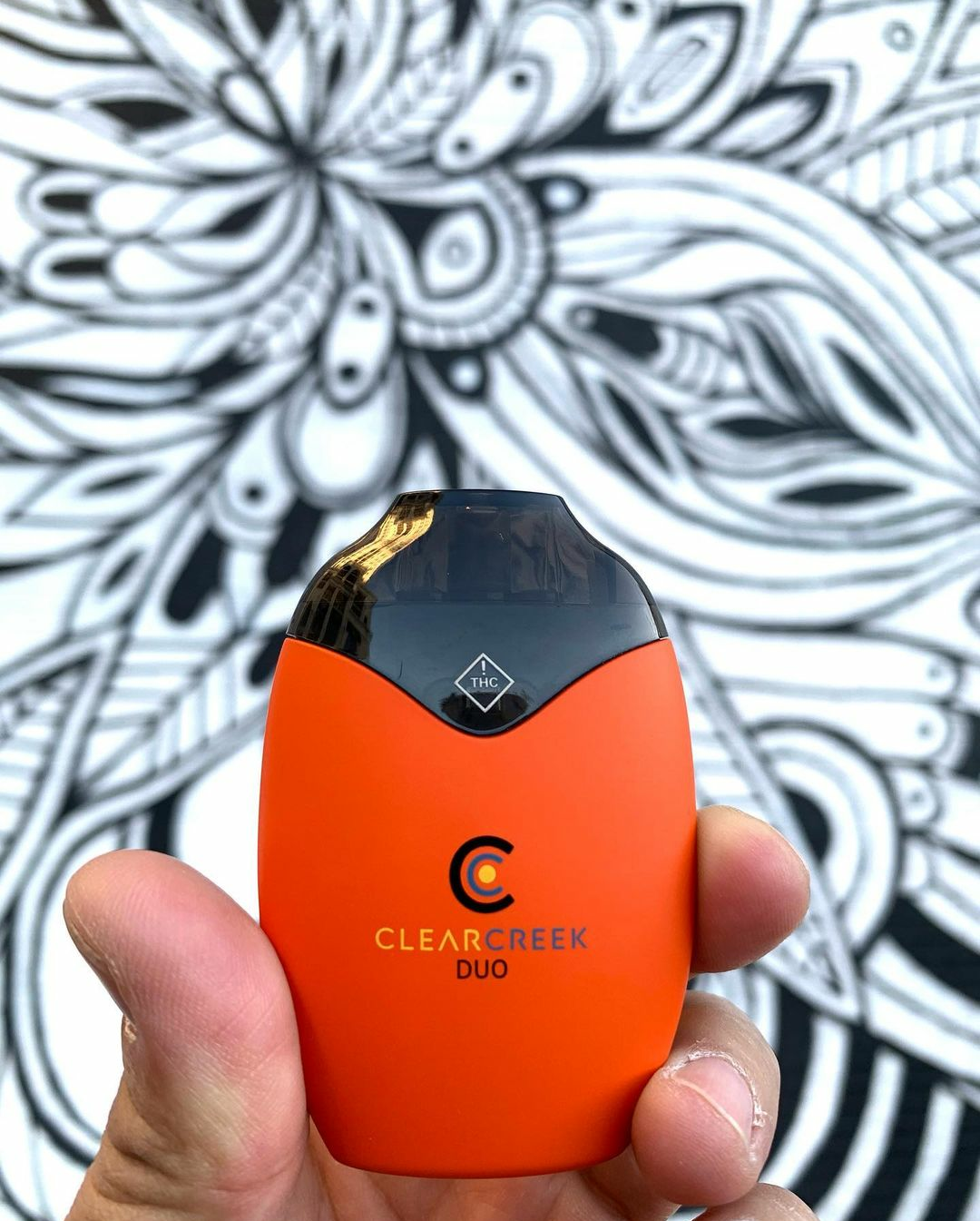
Whichever you choose, it’s helpful to have one that includes a temperature control since the flower or concentrate you vape may need a higher or lower temperature in order to deliver the maximum amount of cannabinoids and/or terpenes available.
Electronic cigarettes, popularly called e-cigarettes, are similar to vape pens yet are typically used with formulas containing nicotine to simulate tobacco smoking.
Types of Concentrates
There is also a wide variety of cannabis extracts or concentrates. For vape pens, distillate is most commonly used for its desirable potency, versatility, and typical lack of flavor or aroma. This refined oil has been stripped of all materials and undesirable compounds except one specific cannabinoid, such as THC or CBD. It can be used to dab, vaporize, and as an ingredient to make edibles, topicals and other cannabis products. Terpenes can also be added to distillates to create various flavor profiles and to alter the effects.
There are also other concentrates, like full-spectrum extracts, shatter, budder, wax, rosin and CO2 oils, which all contain more robust cannabinoid profiles that evoke different experiences.
Cannabis concentrates are thick, and many vape cartridges used in vape pens and e-cigarettes need a less viscous substance to properly vaporize. Thinners or cutting agents, such as PEGs (polyethylene glycols), glycerin, or MCT oils are used by many companies to liquefy these extracts.
Vaping vs. Smoking Cannabis
For those used to smoking cannabis, a common experience when vaping is a clearer high. However, people often debate whether vaping gets you higher than smoking, and if it’s better or worse for the body overall.
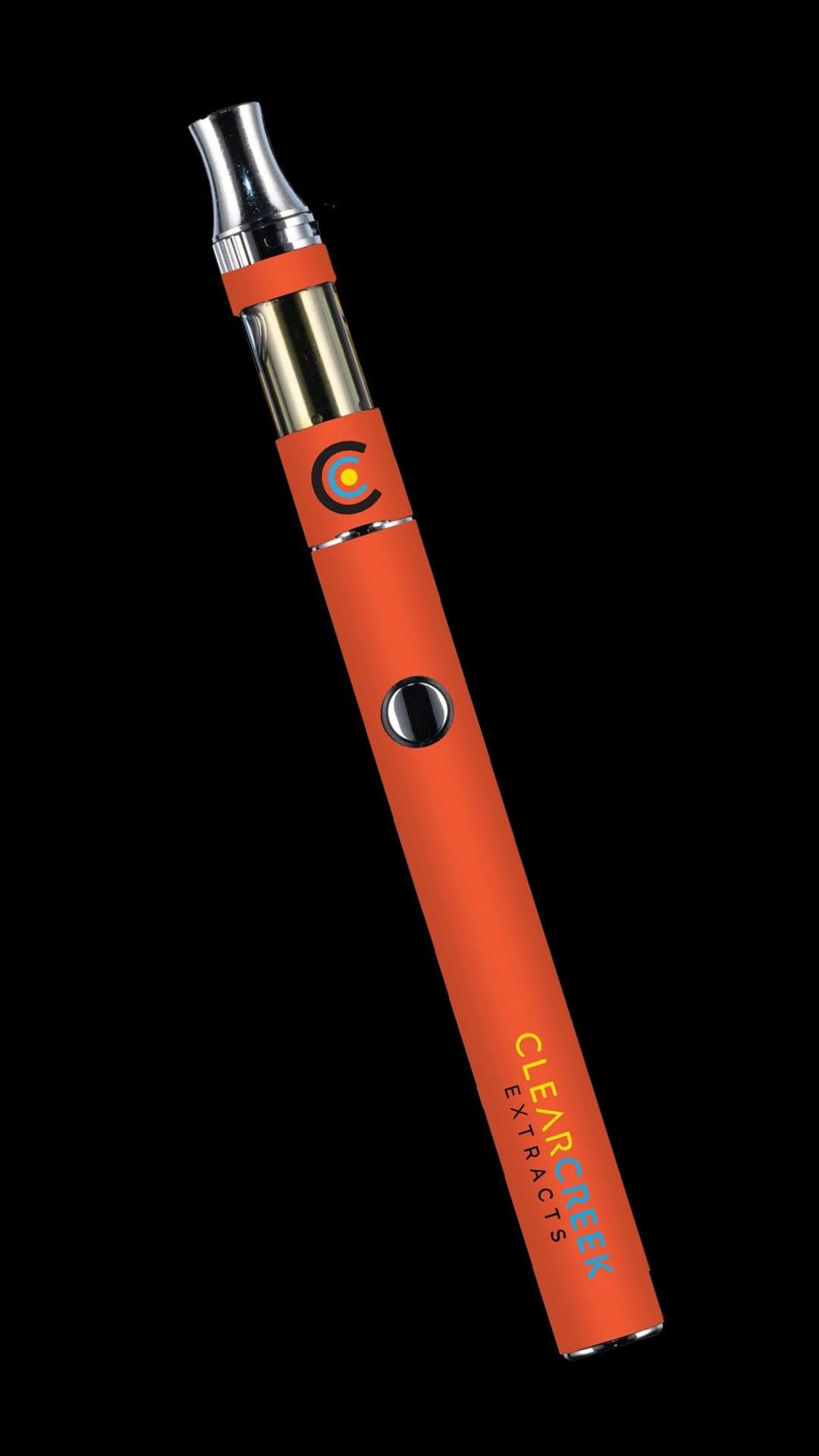
A study published by JAMA Open Network revealed higher quantities of THC in the bloodstream of the participants who had been vaping than those who had been smoking. The vaping participants also had higher levels of cognitive impairment and adverse effects, such as vomiting, hallucinations, and paranoia. It is believed this is mainly due to none of the material being lost to combustion, which means more THC enters the body.
When comparing the carcinogenic levels of cannabis smoke versus tobacco smoke, a study published by Dr. Robert Melamide revealed that cannabis smoke is not linked with lung or colorectal cancer, unlike tobacco smoke, yet is still potentially harmful. The carcinogenic potential of smoked cannabis has been largely eliminated by the development of vaporizers.
Benefits and Risks of Vaping
Let’s start with the benefits. Combustion does not occur in the vaping process and is why vaporizing cannabis flower is considered a healthier option over smoking. What’s currently being debated in the scientific community is if vaporizing concentrates is a healthier option than smoking, which seems to be determined by the type of vape device and amount of concentrate used.
For those who need a high dose of cannabinoids to manage their condition, whether it be a disease or other, vaping has been an ideal solution as it offers a quick, easy and discreet way to consume cannabinoids. It’s also harder to smell cannabis vapor than smoke.
The smell of smoke can linger for days, whereas vapor disappears quickly.
Now, the risks. Currently, the Food and Drug Administration (FDA) does not evaluate these devices and formulas. As a result, products have made it to market with questionable quality and additives, some of which have been FDA approved for ingestion. It is known that when heated, some of these additives can break down into toxic compounds, such as formaldehyde, which are carcinogenic.
In 2019, a public health crisis arose with an increasing number of people showing up in the emergency room due to lung injuries. As of February 2020, the Centers for Disease Control reported at least 68 deaths and more than 2,800 hospitalizations throughout the US due to vape pen lung injuries. The disease, referred to as VAPI or EVALI, is strongly linked to THC vape cartridges (most of which were purchased from the illicit market) containing vitamin E acetate, an ingredient that can cause harm when inhaled.
PEG and glycerin have been shown to undergo decomposition when they touch the heating element of a vaporizer, leading to the formation of toxic carbonyl compounds which have adverse health effects on humans. Stainless steel, ceramics, and glass are some high-quality materials companies can use in their devices to avoid creating these toxicities.
Vaping Safety
With the frequent increase in options of vaping devices and formulas, it’s paramount for consumers to understand the importance of consuming high-quality ingredients with high-quality vaping devices for the best and safest experience possible.
The illicit market, also known as the black market, typically offers radically cheaper devices filled with concentrate formulas that include harmful, hidden ingredients. Using these devices and consuming these products are highly risky because they aren’t lab-tested and are completely unregulated, so you truly will not know what you’re putting in your body. Exposing your lungs to cutting agents, residual chemicals, and artificial flavorings won’t be worth saving a few dollars in the long run.
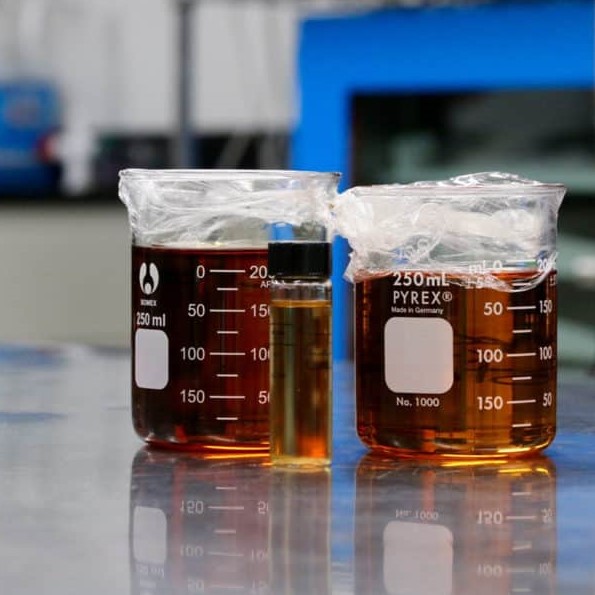
Choosing lab-tested products from the regulated market cannot be stated enough. Ask the budtender at your local dispensary for more tips regarding cannabis vaping, and explore trustworthy products from manufacturers like Clear Creek Extracts.
The Top 4 Reasons Why Consistency Matters When It Comes To Cannabis Edibles
Before the regulated industry, cannabis consumers who desired the relaxing, body-encompassing high of edibles sought out cannabutter recipes and baked infused treats in their own kitchens. However, because cannabis flower grows in a wide range of potencies and there was no method of testing homogeneity, the effects of the homemade pot brownie were inconsistent. Now, licensed manufacturers test their edibles, allowing new users and those with low tolerances to experiment safely — but it’s more than just that. Here are the top 4 reasons why consistency matters when it comes to cannabis edibles.
1. Consistent Edibles Ensure A Safe Experience
Though obvious and mentioned above, consistent dosing ensures that the edible consumer is aware of how much THC they’ve ingested and what to expect before the effects kick in. Unlike smoking or vaping, which provide nearly immediately psychoactive effects, the onsite time of edibles is far longer. Traditionally-made edible marijuana products generally take 30 minutes to as long as 3 hours for noticeable changes in perception, and this delay is often the reason new users overindulge.
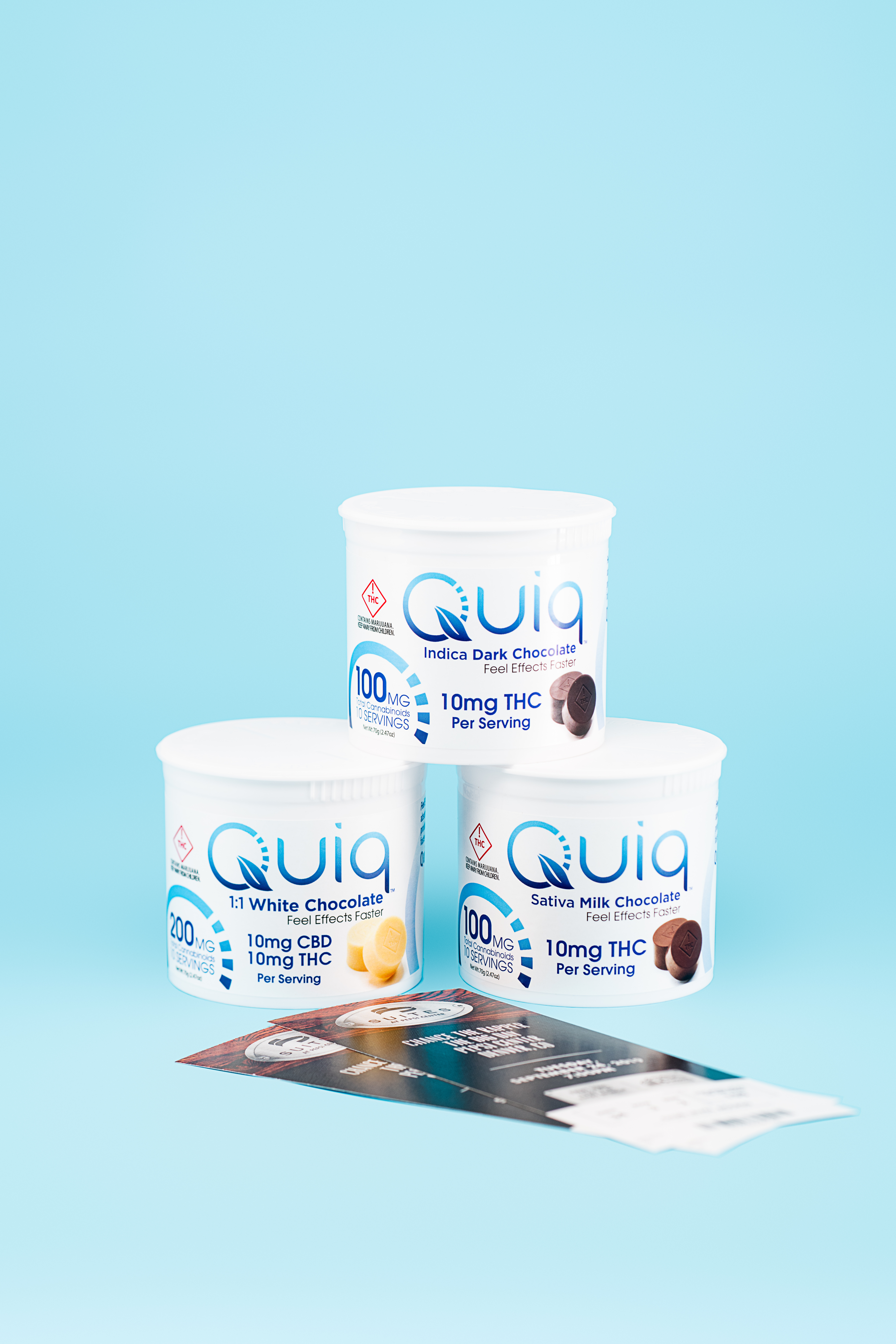
Just as you shouldn’t exceed the recommended dosage for pharmaceuticals, or eat three slices of your grandmother’s pound cake, overconsuming cannabis is not a good idea.
Avoid an uncomfortable experience and follow our mantra: start low, go slow. If the wait time causes you to be hesitant about experimenting with edibles, know that new, fast-acting products are becoming increasingly available at dispensaries. For example, Quiq, an innovative line made with rapid absorption technology, allows users to feel effects in just 5-15 minutes.
2. You Save Money When You Buy Edibles from Licensed Dispensaries
For anyone who’s shopped in a licensed dispensary, this may seem untrue. Flower always appears to be priced more affordably than edibles, right? Why not just buy an eighth and make your own infused goods at home? Well, consider this: when making a homemade edible, you’re unsure about the dosing and are significantly more likely to overconsume, thereby wasting your precious, and often expensive, cannabis flower.
In addition to that, if you’re cooking with cannabis at home, you’re likely creating cannabutter in a baked good. Brownies, rice cereal treats, and cookies are most common -- but consider shelf life. In a few days, those delicious confections will go stale; again increasing your likelihood of waste.
Infused chocolate bars and candy crafted by industry experts are made to last up to several months. Plus, the majority of adult consumers only need 5-10mg of THC to feel effects, meaning a 100mg edible package, the standard in most dispensaries, provides 10-20 uses. Not too bad for $15-20!
3. You Can Confidently Make Recommendations to Friends and Family
If you’re a medical cannabis consumer, which many of us are, it wouldn’t surprise us if you have a testimony about how the plant has changed your life for the better. Most of the team at Medically Correct can relate! Whether you’ve experienced a reduction in stress, pain, or otherwise, you’ve likely shared your success with those who you’re close to.

But as Leafly points out, many popular strains which share the same name are, in fact, quite different in terms of cannabinoid and terpene content, and that means effects can vary significantly. They found that Durban Poison and Pineapple Express are among the least consistent. You might love these strains, but maybe you’d shy away from recommending them to a friend, as they might have a completely different reaction.
Now, edibles are a different story. To ensure quality control, edibles’ THC is added in the form of an extract, which can be precisely measured down to the milligram. Not just that, but when creating an extract such as distillate, nearly all of the plant’s lipids, terpenes, and cannabinoids are stripped away except for THC. This simplifies your body’s reaction and unlike individual’s responses to various, complex strains, overall, isolated THC produces a very consistent effect from person to person.
4. Consistent Edibles Allow You To Enjoy Your Favorite Flavors, Time and Time Again
Just as you’d expect your favorite grocery store items to taste the same across all retailers, cannabis businesses are aiming to create that same trust and dependability for their edible products. As more and more states legalize marijuana, the market has expanded to include more knowledgeable consumers that demand not only consistent THC dosing, but also reliable quality and flavor.
While any edible product you buy at a dispensary requires lab testing for THC content, deliciousness isn’t always a guarantee. For the best experience, we recommend that you choose premium edibles created by established companies, as industry expertise often translates to better ingredients and more knowledgeable chefs.
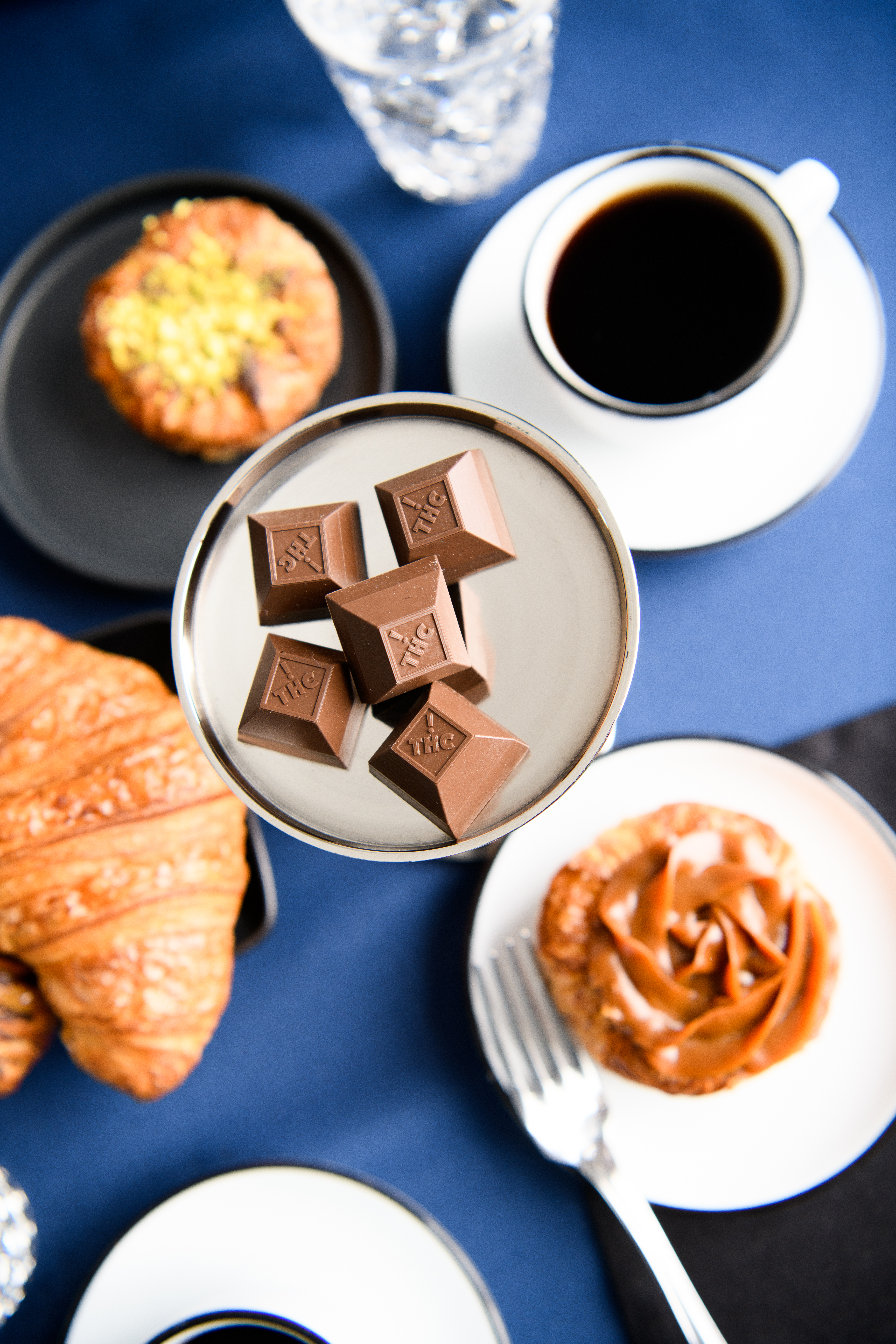
Where To Find Consistent Cannabis Edibles
Now that you understand the importance of consistency and the benefits of purchasing edibles from a licensed dispensary, are you curious where to shop? In Colorado, you can order online and pick up from your local dispensary; and if you’re a fan of Medically Correct, discover where to find our brands and products by visiting our store locator.
What’s your favorite edible? Do you have any tips for new consumers? Comment your suggestions below, and share this post on social to continue the conversation!
What Are Terpenes and Why Should You Care?
The distinct aroma of cannabis – some love it, some don’t – but either way, what creates this unique fragrance is something quite complex and powerful – terpenes. What are terpenes? And why should you care? Knowing what they are and what they do will give you a new appreciation of this sacred plant, so let’s dive in!
Think of terpenes as essential oils, the aromatic compounds that give blueberries their blueberry taste and lavender its lavender smell. Although they are under researched at this time, they are among the fastest growing areas of interest in cannabis due to their potential influences on cannabis experiences and their many potential medical benefits. We do know that some terpenes may be pain relieving, sedating, energizing, anti-inflammatory, or antiviral (and the list goes on). Terpenes play an important role in the effects of CBD and THC through the entourage effect, which we will come back to a bit later. Here’s an easy way to wrap your head around how they work together – cannabinoids, such as THC and CBD, are like the engine of a car, and terpenes are like the steering wheel.
There are around 120 different cannabis terpenoids that have been identified so far, and when you learn what the terpene profiles are in various cannabis strains, you can start choosing strains based on how you’d like to feel.
Common Terpenes
Here are a few of the most common terpenes you’ll find in your favorite cannabis strains and what science has revealed about their primary potential therapeutic benefit.
- Myrcene = Relaxing. Myrcene smells like cloves and herbs. It is the most common terpene in cannabis, and you can find high levels of it in strains like OG Kush, Blue Dream and Grape Ape. Also found in lemongrass, thyme and mango.
- Limonene = Energizing. Limonene smells like citrus, and inhalation of limonene increases serotonin and dopamine levels in key regions of the brain that are associated with anxiety, depression and stress. Look to strains such as Super Lemon Haze, Banana OG and Wedding Cake for high levels of limonene. Also found in citrus fruits, peppermint and eucalyptus.
- Beta Caryophyllene = Pain relieving, anti-inflammatory. Beta Caryophyllene acts as a cannabinoid, activating CB2 receptors of the endocannabinoid system. It has a woody and spicy smell. High levels are found Death Star, Bubba Kush and Sour Diesel. Also found in hops, cloves, rosemary and black pepper.
- Pinene = Soothing, comforting. Pinene smells like pine and is great for opening bronchial passages. You’ll find high levels in strains such as Purple Kush, Snoop’s Dream and Critical Mass. Also found in pine needles, basil, parsley, and dill.
Terpenes & the Entourage Effect
The term entourage effect was created by professors, S. Ben Shabat and Raphael Mechoulam, to represent biological synergy of cannabinoids and other compounds, such as terpenes. A central understanding of the use of botanical remedies is that herbs contain many active ingredients. Primary active ingredients may be enhanced by secondary compounds, which act in beneficial synergy. Other herbal constituents may mitigate the side effects of dominant active ingredients.
Terpenes interact with our endocannabinoid system and assist cannabinoids in entering the bloodstream through the entourage effect. Ethan Russo, a leading medical cannabis doctor and researcher, says that cannabinoids and terpenoids are half-siblings and that terpenes are critical components to the medicinal effects of cannabis. He also found evidence showing that terpenes can enhance the beneficial effects of THC and reduce its adverse effects.
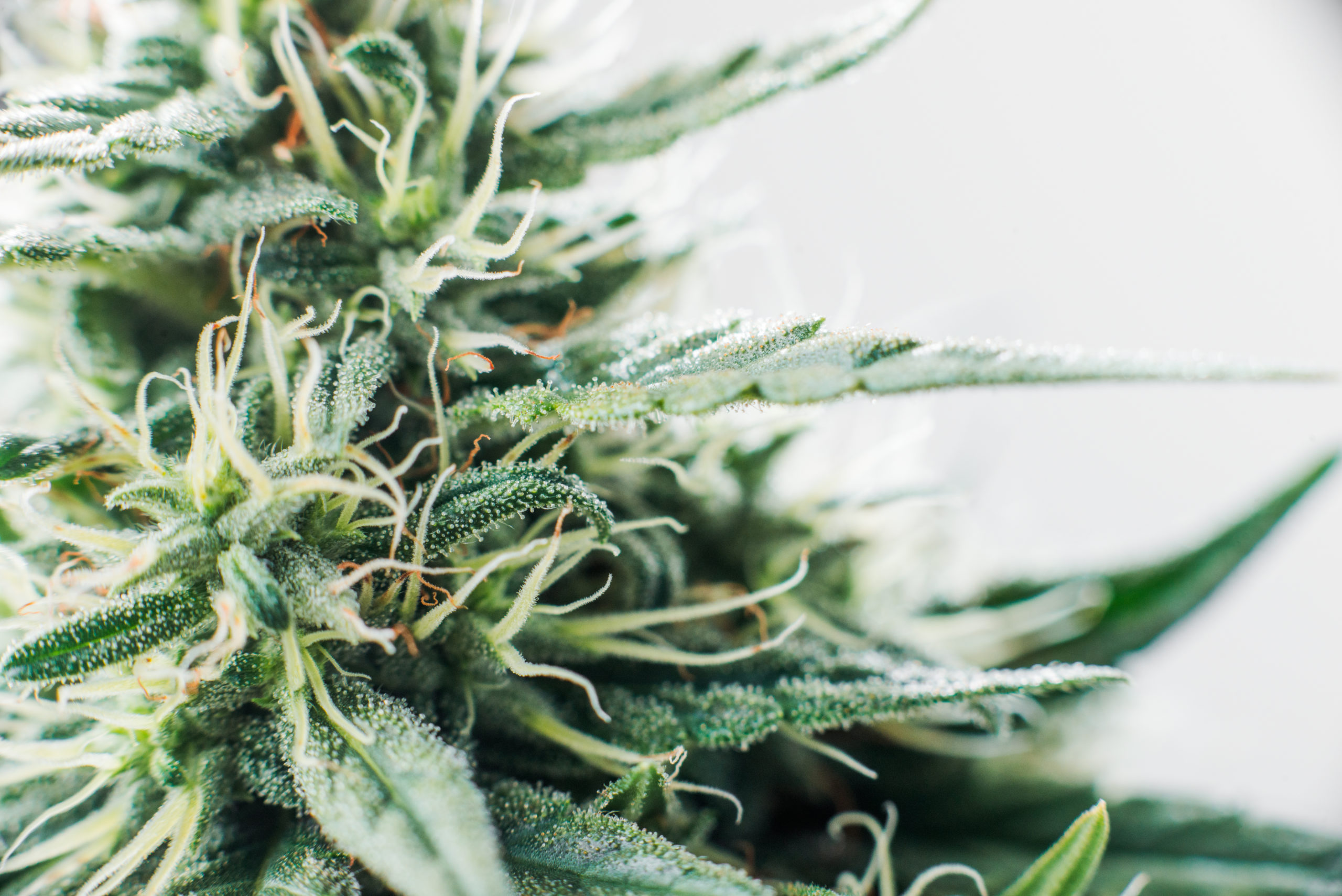
How Consumption Methods Affect the Effects of Terpenes
The effects and benefits of terpenes can vary based on the consumption method utilized. With inhalation of flower or extracts, many of the fragile terpenes are lost due to the high heat of direct fire, especially via smoking. Vaporization, on the other hand, allows for greater temperature control and can reduce the number of terpenes lost, giving this inhalation method greater access to their therapeutic benefits and a fuller flavor profile.
With oral consumption of edibles, much more research is needed to fully understand the effects. What has been revealed so far are various beneficial digestive effects. For example, myrcene has been found to reduce the formation of ulcers in the stomach and small intestines, linalool has shown to protect the liver from damage, and limonene has shown to have similar benefits to myrcene and as an edible digests, may also increase the absorption of the cannabis compounds through the stomach and intestines.
Now that you know about terpenes, you are more likely to understand why you should indeed care. It’s important to note that since everyone is different, you may have an entirely opposite experience from a terpene or terpene profile than that of another person. Experiment with caution and keep notes with which terpenes you consume along with pertinent dosing information, so you can use your own data to guide your future purchasing decisions.
A Guide to Cannabis Tourism in Colorado
The cannabis industry has much in store for you here in the land of the good ‘ole Rocky Mountains. With sales hitting nearly $1.75 billion in 2019 alone, Colorado is home to the nation’s longest-established recreational cannabis industry – and it aims to please. As the first state to legalize, Colorado is a destination for cannabis tourism.
If you’re new to cannabis and preparing to visit your very first pot shop or perhaps on a road trip to check out Colorado legalized recreational scene, it can feel overwhelming given all the options of where to shop, how to shop, what to buy, and where you can/can’t consume. But have no fear, we’ve put together a helpful guide for you to navigate with ease.
How to Find a Dispensary & Your Perfect Cannabis Product
Two websites you’ll want to bookmark are Weedmaps.com and Leafly.com – these are the best store and product locators, plus they offer a plethora of information on all things cannabis such as strain information, news, and deals. If you plan to navigate around on your own, they will be your best friends!
Unless you have a medical marijuana card, you’ll want to stay clear of anything labeled MEDICAL or MED, and instead look only for options that are labeled RECREATIONAL or REC. Some stores like the famous Native Roots dispensaries have both MED and REC options and are labeled as such.

If you’d like some extra support, cannabis tours are where it’s at! My 420 Tours offers guided tours of shops and even grow operations, where you can have an insider look at how cannabis is grown. Need help finding 420-friendly accommodations or transportation? They can help with that too. While you’re at it, check out some other fun cannabis tourism activities such as Puff, Pass, and Paint or Kush & Canvases to socialize with other cannabis lovers while bringing out your artistic side. (Note: COVID-19 may have affected some operations)
The primary categories of cannabis products are edibles, flower, vape, concentrates, and topicals. There are plenty of options within each of these categories, so it’s helpful to get clear on what product categories you’re most interested in:
• Looking for some energy and knee pain relief while trekking up a 14er? Edibles formulated with caffeine and/or energizing herbs are a great option, as well as topicals for acute pain relief.
• Are you looking to taste various flower strains? You can purchase high-quality bud from a gram up to as much as an ounce. Pre-rolls are joints ready to be smoked, which you can buy individually or in packs. Just know that the potency of flower these days is A LOT stronger than it used to be.
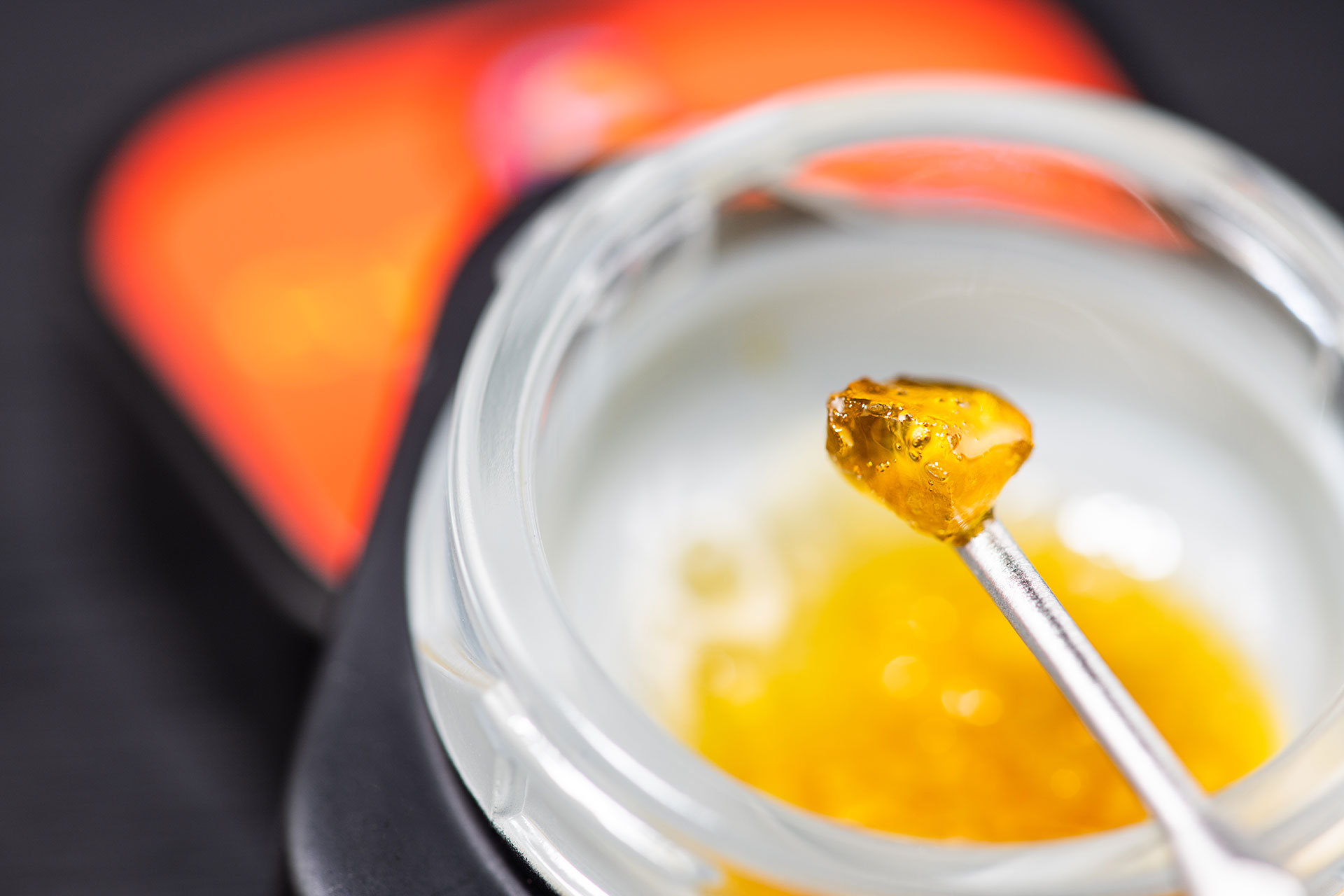
• Is a dabbing experience what you’re after? Concentrates will be your focus. This form of cannabis is the most potent available. You’ll need a dab rig or dab pen, and some stores carry these accessories for you to purchase.
• Perhaps you’re looking for something discreet and long-lasting to consume during a convention or a week-long seminar series? Edibles are an ideal choice. You can find all sorts of varieties from drinks to snacks, traditional onset to fast-acting, zero-calorie to full on sugar and fat…the sky’s the limit here!
What To Expect At a Dispensary
When you arrive to a dispensary, you’ll be greeted by either a security guard or front desk representative who will check your ID upon entry, so have it ready and keep it handy until you finish your purchase. (See this list of acceptable forms of ID). Be prepared to wait - there’s a limited number of people who can be inside the retail space at one time. If anyone in your party is under 21, they’ll have to remain outside the store. If you are part of a cannabis tourism group, they will give you details as well.
After checking in, you’ll be guided to shop one-on-one with a budtender to help you find the perfect products. Don’t be afraid to ask questions… that’s what they’re there for. If you’ve never consumed or haven’t consumed since high school, there are a lot of terms that will sound foreign to you, and budtenders are your best resource in the moment, so leverage their help! If you’ve done your research ahead of time, let them know what you’re looking for. If you have no idea what you want, be sure to tell
them how you’d like to feel, what your experience level is like, and ask for an overview of their offerings.
Most stores are cash-only, so bring cash or a debit card as most stores also have an ATM onsite. You can purchase up to one ounce of cannabis or equivalencies per day. The dispensary won’t record your name or divulge it to the government; however, staff are trained to watch for repeat customers who attempt to purchase more than the legal limit in one day.
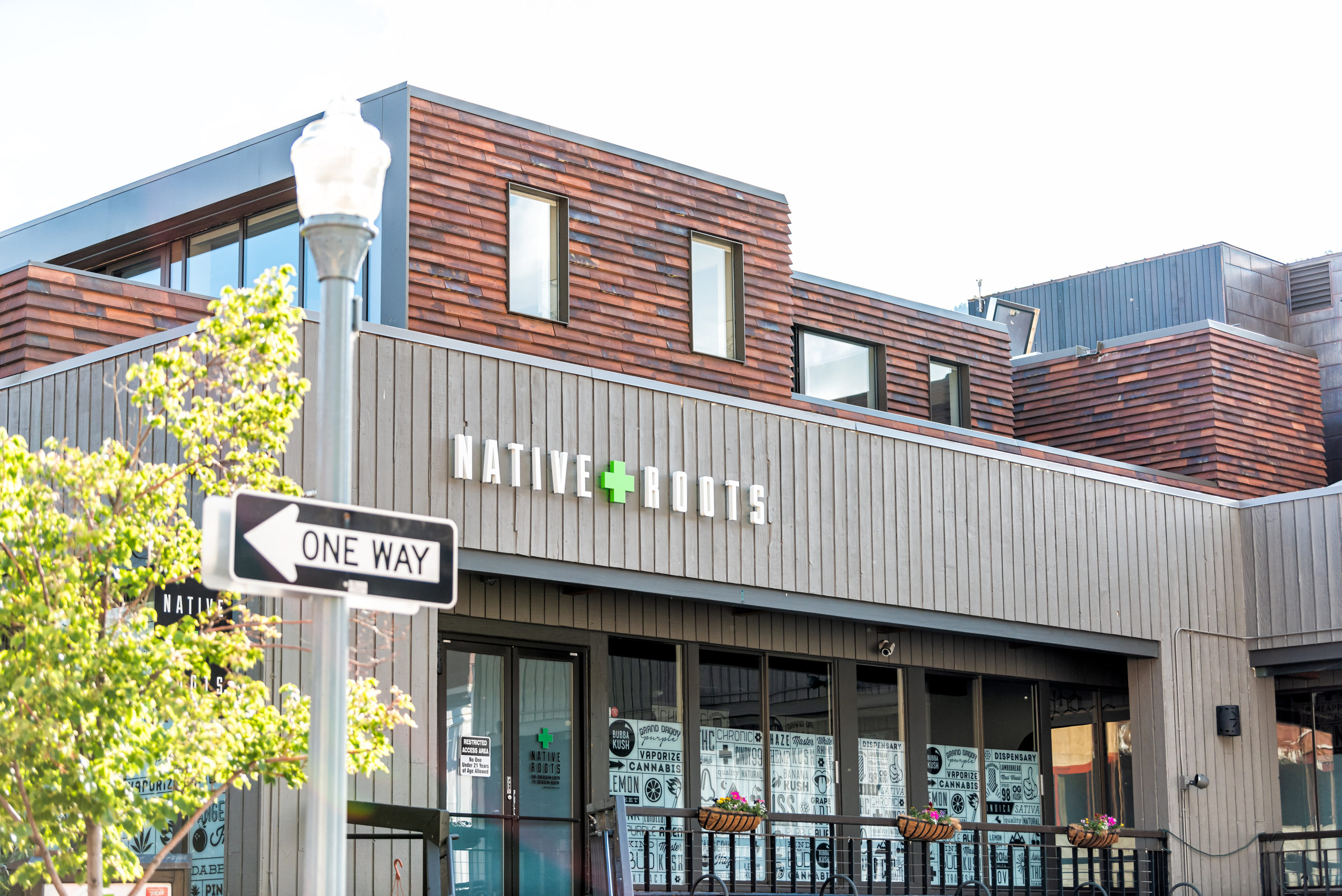
And know that it’s good etiquette to tip your budtender, especially if they spent a decent amount of time with you. Here’s some tipping insight for you to consider.
What You Need to Know About Legal Consumption
Just because you can walk into a store to buy weed doesn’t mean you can consume it anywhere. At this point in time, unfortunately, the restrictions on where you can and cannot legally smoke marijuana are vast. Smoking in public or in your car are big universal no-no’s! Your best bet is a private home, yet if
you don’t have that luxury there are some 420-friendly hotels and members-only cannabis clubs
throughout the state where you can pay for daily memberships.
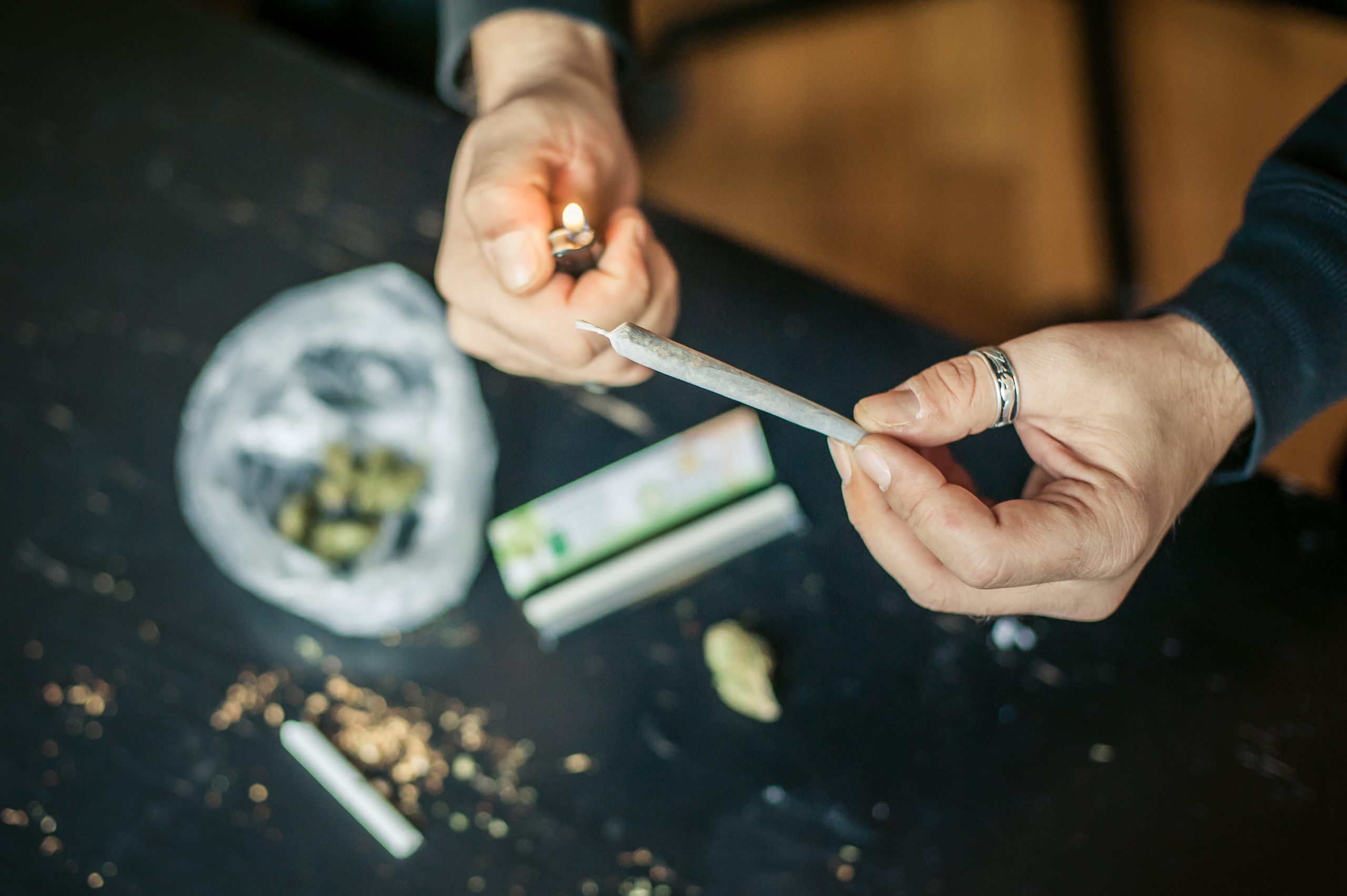
Each city has its own rules, so it’s helpful to know what to expect depending on where you’re aiming to go. For example, Colorado Springs is medical-only, so unless you have a medical card, you won’t be able to purchase from any pot shops in that town. There are also resources like cannabis tourism websites and activities to turn it into a full cannabis tourism experience. Resources like Westword can give you further information into popular destinations and further specificities on the laws.
And keep in mind, crossing state lines with your Colorado cannabis is illegal and can lead to an arrest if you’re pulled over, especially if you’re caught drugged driving. Due to the large number of people who visit Colorado intending to purchase cannabis to bring back home, cops are known to keep watch for cars exiting the state.
Wherever you choose to go and whatever you choose to consume, be smart, be safe, and go slow! You can always consume more, but you can’t consume less. Purchase cannabis products from a legal market, where industry leaders have set standards for third-party lab testing, encouraging consistency and safety.
The History of Cannabis Chocolate
From ancient prophetic brews to the cult-classic pot brownie, cannabis edibles in both food and drink form have been on a global journey through digestive systems everywhere over the last few thousand years. Let’s travel back in time through the present, taking a brief look at the history of cannabis chocolate so you can learn why cannabis edibles are now in such high demand.
Let’s start with the ancient Chinese emperor, Shen-Nun, who ruled around 2,700 BC and is known as the Father of Chinese Medicine. He documented various uses of cannabis medicinally. It seems the Chinese were the first in recorded history to ingest cannabis and introduce it as a medicine to the world. However, the earliest recorded cannabis edible was in the Indian subcontinent. It is here that the native people have prepared food and drink with bhang as early as 1,000 BC, for both spiritual and medicinal purposes. This is also where the world’s most sought-after Kush cannabis strains originated.
Fast-forward to the 1800s when people in the United States began making cannabis tinctures, candy, and other infused foods. These were all sold as commonly as toothpaste and even advertised in local newspapers. In more modern times, cannabis-infused food was credited to the publication of The Alice B. Toklas Cook Book in 1954. In it, she included a recipe for “hashish fudge”, a baked good based on an 11th century Moroccan sticky confection recipe, majoun. This sweet treat resembles a truffle. It contains aromatic spices along with cocoa powder, honey, butter, nuts, dried fruit, and of course, hash. Many say the pot brownie was born from this recipe. Now in 2021, many top chefs are even crafting their own edibles.
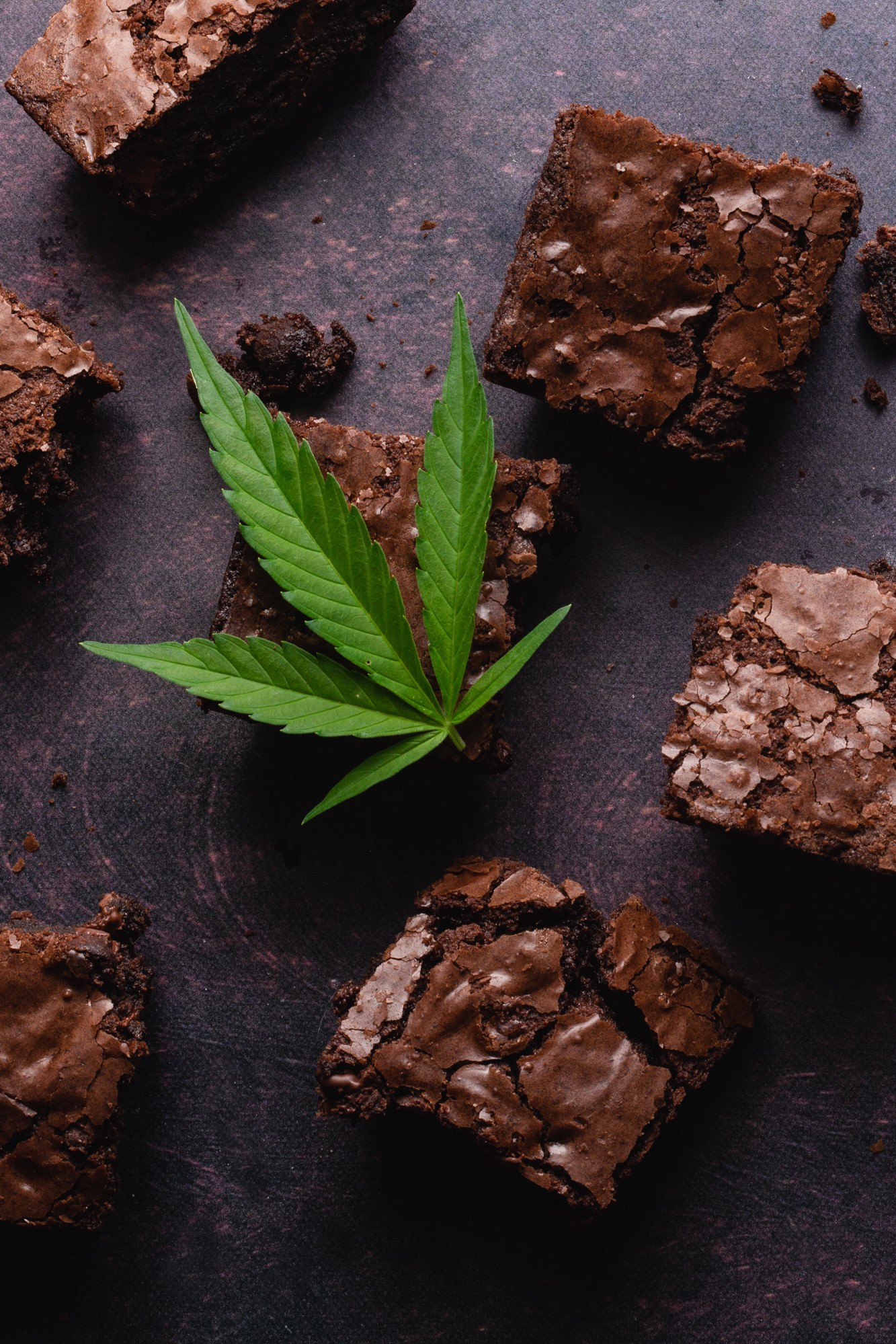
The Emergence of the Cannabis Industry
Everything began to change once the Pure Food and Drugs Act of 1906 went into effect. This laid the foundation for future cannabis prohibition. Over the course of the following three decades, cannabis became illegal to include in any formulations. The government was also able to start arresting people for cannabis offenses, which has unfortunately continued through to this present day.
The country slowly started coming back to its senses in the 1970s when some states began decriminalizing cannabis. In 1996, California led the way with medicinal legalization through the Compassionate Care Act. This movement was driven by the efforts of the legendary Denis Peron, who co-founded the first semi-legal dispensary in the United States and teamed up with the infamous Brownie Mary, a 69-year-old activist. Together they distributed cannabis edibles to patients in need of pain and nausea relief. Since then, the path of legalization has been far from easy.
The Early Days of Manufacturing Edibles
During this phase of development, industry regulations regarding cultivation and manufacturing practices did not exist. Picture this: Mrs. Smith procures cannabis extract from cannabis flower she grows herself. In her home kitchen, she bakes it into infused foods such as candies and brownies. She then sells them wholesale to her friend who has a dispensary, who sells them to their patients. All of this was done with no tracking systems in place. Edibles could be made in anyone's kitchen without lab tests; hence, dosing was highly inaccurate and inconsistent. Quality was questionable. As a customer, you’d just hope for the best.
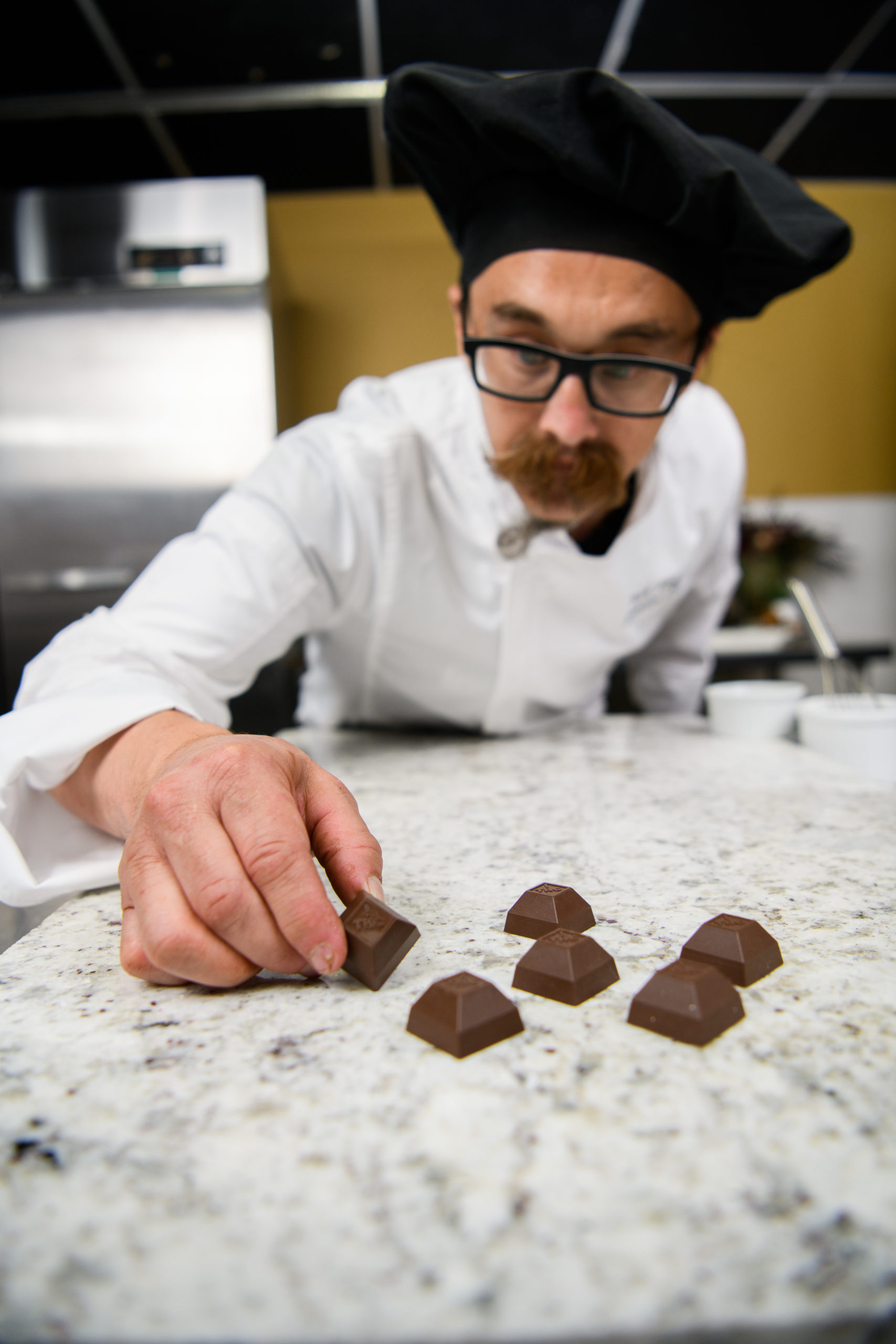
The Industry Puts on a “Suit and Tie” (without help from the government)
Still to this day, due to the federal regulation of cannabis as a Schedule 1 substance, the FDA does not regulate edibles. Individual states had to take it upon themselves to create a greater level of safety, consistency and quality. Industry innovators, such as Medically Correct, have led the way to craft safety regulations. States then adopted and enforced these regulations to protect the cannabis consumer and establish integrity in business practices.
As alluded to previously, consumers could get an edible with a descriptor as vague as “two-times the strength” one week. An edible from the same manufacturer with that same descriptor the next week could have a totally different effect. Before it even became mandated, Medically Correct committed to testing for activated milligrams of THC. They added this along with nutritional information on their product labels. This early focus on consistency and quality helped propel them to the top of the Colorado edibles market, which was the first in the nation to become a highly regulated market.
Why Chocolate Edibles Are In High Demand
As the variety of products available in the market began to rise, it became increasingly difficult for stores to carry chocolate-based baked goods due to their short shelf-life. This created a need for shelf-stable alternatives to items such as the cult-classic edible brownie. Enter the cannabis chocolate bar! This became an ideal solution for manufacturers, retail operations and consumers alike. Not only is it a familiar delight, it also allows for more precise dosing and longer shelf-life.
If you were to taste cannabis extract all by itself, you’d undoubtedly notice its pungent and bitter flavor. Chocolate, especially dark chocolate, has rich complex notes which are a perfect ingredient to mask these less than desirable flavors. Plus, when chocolate is infused with cannabis, the naturally occurring fat from the cocoa butter supplies the necessary lipids to help the body process it.
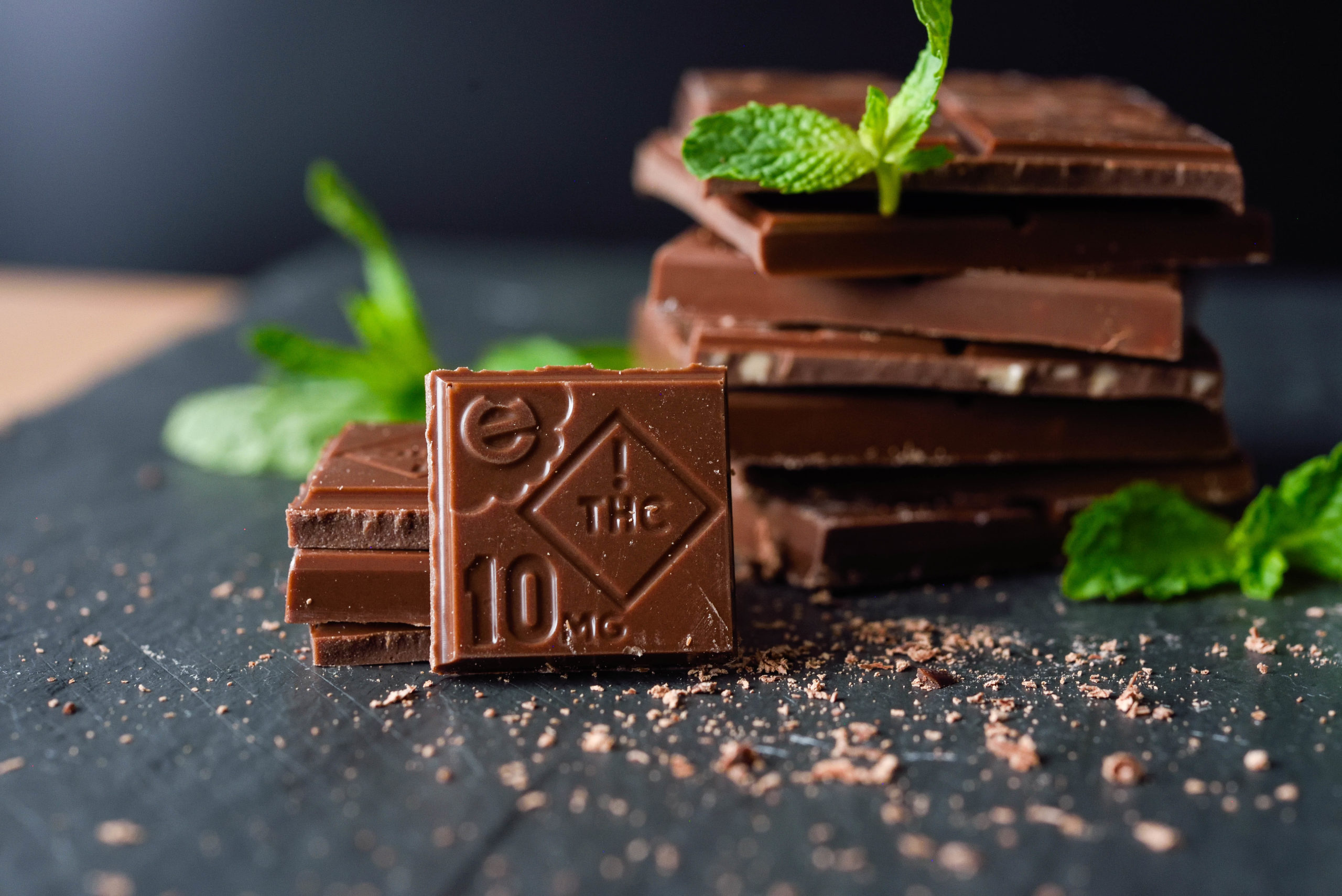
Combining cannabis with chocolate also has a chemically synergistic effect. In a nutshell, cacao beans produce a type of cannabinoid that the body itself also produces, called anandamide. It plays an important role in managing issues such as pain, mood, and appetite, and has similar effects to THC. Chocolate also contains theobromine, an alkaloid and caffeine-relative, and a known vasodilator that helps deliver nutrients and chemicals into the tissues. This creates an enhanced, elevated experience that lasts even longer.
__________________________________
Some trivia for you: Why does food taste so much better when you’re high? Well, cannabis is known to heighten sensory perception. This is due to THC binding with certain receptors in areas of your brain involved with your senses. Overall perceptions of yourself and your surroundings increase, including brighter colors, stronger smells, and richer tastes. YUM!
If you’re new to consuming cannabis edibles, check out this helpful guide to understand how eating cannabis is different than smoking it.
Be a savvy cannasseur and check out the delicious selection of Medically Correct’s cannabis-infused chocolates by visiting our Shop Now page.
Improve Athletic Recovery with Cannabis Edibles and Topicals
Cannabis becomes more mainstream every day as legalization has spread across the country. A multibillion-dollar industry sprang up almost overnight and has grown like … well, like a weed. One major sector of this industry is industrial hemp, quickly gaining popularity when the 2018 Farm Bill legalized the manufacture and sale of CBD-infused products nationwide. People unlikely ever to use cannabis have flocked to try the new array of wellness products, but still, the marijuana sector of the cannabis industry has greater demand. Innovative companies have come up with a wide variety of cannabis-infused products, mostly edibles and topicals, that target symptoms in creative ways. Athletes are one audience that brands often target, especially when it comes to improving athletic recovery with cannabis.

CBD and Athletic Recovery
CBD produces many of the same results as THC, but not that “high” feeling. Athletes tend to prefer it because they want to stay sharp during a workout.
But to say it has no psychoactive properties is not really true – CBD eases stress. It elevates one’s mood which can help team athletes respond positively to stress and anxiety, and to help solitary athletes push through mental blocks and physical plateaus. CBD produces bodily relaxation similar to a mild muscle relaxer, good for recovery and sore muscles.
Perhaps the compound’s most exciting action is its ability to fight excess fat and prevent obesity. In a 2016 study published in Molecular and Cellular Biochemistry, scientists discovered that “CBD encourages the metabolism of existing fat cells [and] prevents the formation of new fat cells.” The study states that more research is required, but the early findings are promising for the future of obesity prevention.
There are a variety of methods to consume CBD, and edibles are one of the most popular product categories. Great for extended workouts and endurance sports, edibles take about 30 minutes to an hour to kick in, and last several hours after that. Conveniently, you’ll likely experience their strongest effect at about the time you’ll be growing tired. Tinctures, on the other hand, are best used just before a workout because they take effect quickly; or use your CBD-infused oil for recovery and mix it into your post-workout protein shake.
CBD topicals are comparable to pain relief creams like Voltaren and Aspercreme, but are often made with more natural ingredients. You put the salve right where it hurts and the medicine will go straight through the skin to the source. Cannabis-infused bath salts are great for soaking after a workout, or right before bed to help you relax and get a good night’s sleep. This will help you heal, improving athletic recovery.
The Benefits of Using THC During Your Workout
While THC produces noticeable psychoactive effects, it offers a host of medical benefits, many of which may support athletic ability and recovery. THC is a vasodilator, which means it widens blood vessels and increases the flow of blood carrying oxygen throughout the body. It can lead to a better pump for weightlifters, and the fast-flowing blood carries more oxygen to the muscles before, during and after workout to keep them fresh, and help them heal.
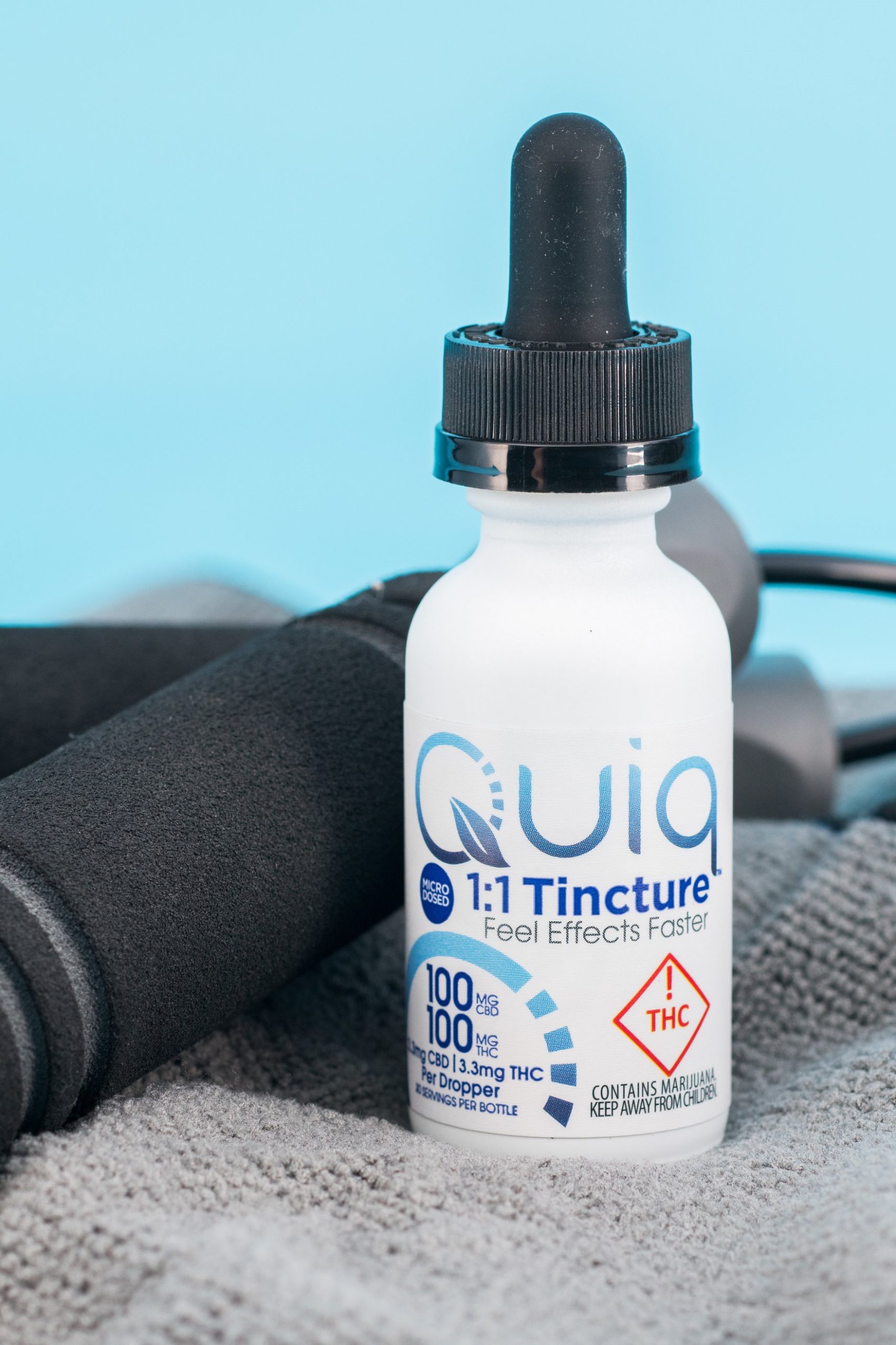
THC is also a bronchodilator, which expands airways, facilitating better, deeper breathing that brings more oxygen into the system, improves stamina and helps aerobic exercisers increase endurance.
THC’s anti-inflammatory properties relieve chronic pain from old injuries, arthritis, and lower back pain that plague weight lifters and older athletes. In higher doses, it encourages falling asleep and staying asleep. Rest is essential in order to recover faster.
Taken in the correct quantity, THC and the right terpenes can create focus, uplifted feelings and energy that will inspire you to get on your bike or pull on the running shoes and get down the road. Not only can cannabis help you get better results in the gym, it can give you the motivation to get up and go.
Don’t forget, THC makes you hungry. If you are serious about your health, get used to treating the munchies with leafy green vegetables, avocados, berries, and yogurt – which make a pretty good smoothie, by the way.
Athletes and Their Success with Cannabis
Wellness gurus and serious athletes have gravitated to cannabis products because they can relieve workout pain, bring on faster recovery, and help improve sleep quality. Could cannabis become an integral part of a healthy lifestyle?
One of the world’s best runners, who uses cannabis daily as part of his training, believes he is using the drug to implement his healthy lifestyle and keep him among the elite runners in the world. Cannabis edibles aid his athletic recovery. Avery Collins of Silverton, Colorado said that cannabis makes his runs more enjoyable. “They’re almost spiritual,” he added.

Avery believes in responsible consumption, and combines edibles, salves and an occasional smoke on his 140-mile a week training routine. He believes cannabis is a safe alternative to hard drugs and booze, and he also found it works with pain relief. Basically, he’s just a guy who loves weed and running, so he does both with abandon.
A trainer, doctor, and cannabis advocate has also found a niche in the use of CBD to help athletes get the most out of their bodies. Dr. Ben Cowin is a 20-year sports medicine veteran who treats professional athletes in his Denver practice and around the world. He said his research with CBD has changed the way he looks at treating athletes, and he’s even helped to formulate a hemp-infused topical for managing pain and inflammation.
“We can offer a safe alternative to pain control thanks to cannabinoids,” he said.
Get The Best Results When Using Cannabis for Athletic Recovery
Many findings indicate that when taken together, the benefits of CBD and THC can serve to intensify each other. If you live in a legalized state, try adding a small dose of THC to a larger dose of CBD. But if you play organized sports, make sure you aren't breaking any league rules by testing positive on a drug test. Also, if you are limited by the legality of marijuana in your state, know that CBD, in itself, can help to relieve pain, reduce inflammation, and improve sleep quality -- all important factors for athletic recovery.
When consuming cannabis products for performance and recovery purposes, be sure to pay attention to your body's response. Everyone is unique and no one size fits all. We advise keeping a journal and recording what applications and doses give you the best results. Be sure to purchase quality, lab-tested products and always remember to consume cannabis responsibly.
Cannabis Overdose: What To Do When You Overdo
Yes, you can overdose if you consume too much cannabis. No, you won’t die from it. You might feel weird and angsty for a few hours but remain calm, follow the steps listed below, and you’ll be just fine. Nothing bad will happen.
Of course, it’s better to avoid consuming too much cannabis in the first place. We’ll show you how to do that, too. Especially with edibles, it’s easy to eat too many of those delicious chocolates, gummy bears, brownies or whatever. Familiarize yourself with the symptoms of a cannabis overdose so that you’ll be able to recognize what’s happening and won’t make embarrassing calls to 911.
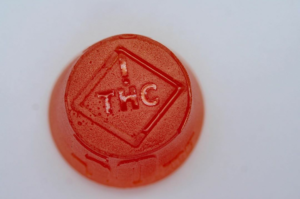 The effects of an overdose are like those of cannabis, only cranked up to 11: anxiety and paranoia; disorientation, dizziness, feeling woozy, heaviness, sweating, loss of coordination and nausea. You may note an increased sensitivity to light, sound, temperature and texture.
The effects of an overdose are like those of cannabis, only cranked up to 11: anxiety and paranoia; disorientation, dizziness, feeling woozy, heaviness, sweating, loss of coordination and nausea. You may note an increased sensitivity to light, sound, temperature and texture.
If you are wearing a scratchy sweater, toss it and get into something comfortable. Adjust the lights and noise. If you’re walking around and bumping into things, go lie down. Do not drive! Your motor skills, judgement and coordination will be impaired.
Another effect of ingesting too much cannabis is sleepiness. Sleeping is your friend. Help it along. See if you can take a nap and wake up on the other side.
What to do when you’ve had too much cannabis
- Don’t panic! Take control of your mind. Keep telling yourself you’re not dying, that the unpleasantness will start to pass in an hour or sooner. In four hours or so, it’ll all be over.
- Your racing heart may frighten you. Be aware that it’ll slow down soon, once the blood-pressure lowering effects of cannabis begin. You can help slow it down with deep breathing.
- Take deep, cleansing breaths. Take each breath all the way down into your belly, then breathe out slowly. If you start to feel sleepy, awesome! Go to sleep.
- Find a quiet, safe place and relax. Call a friend who has experience with cannabis who can either come over and hold your hand or say calming things on the phone.
- DRINK WATER! Marijuana causes dry mouth. Water will fix that, as well as speed up metabolism and cleanse your system. You may want to eat something light. But keep sipping on a glass of cool, clear water.
- Marijuana’s time-dilation effects can make you feel that the effects are lasting forever, so it helps to distract yourself. Watch something soothing on TV or listen to relaxing music. Choose long songs, like jam bands, Mozart’s Jupiter Symphony, Keith Jarrett’s Koln Concert -- anything mellow and long.
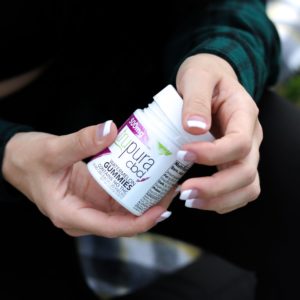 You could try a little CBD or chew on two or three peppercorns to lessen anxiety. Some scientific studies support the vast anecdotal evidence. CBD is a cannabis-derived compound that doesn't produce that “stoned” feeling and can help relieve anxiety. To ensure precise dosage, purchase your CBD products from a reputable company. Be careful: Some CBD products contain THC, which is the last thing you need. Start with a dose of about 20-30 mg of CBD.
You could try a little CBD or chew on two or three peppercorns to lessen anxiety. Some scientific studies support the vast anecdotal evidence. CBD is a cannabis-derived compound that doesn't produce that “stoned” feeling and can help relieve anxiety. To ensure precise dosage, purchase your CBD products from a reputable company. Be careful: Some CBD products contain THC, which is the last thing you need. Start with a dose of about 20-30 mg of CBD.
Black peppercorns or a few sniffs of black pepper may also help alleviate paranoia and anxiety. Try about three peppercorns, chew slowly, keep water handy because pepper is … peppery. Calming effects will likely take about an hour.
Never mix drugs – don’t take valium to calm your racing heart, don’t take stimulants to wake up, and don’t drink alcohol or even caffeine. You’ll just have more forces pulling your body in different directions instead of one. You can manage the situation yourself with patience and a little help from trusted friends.
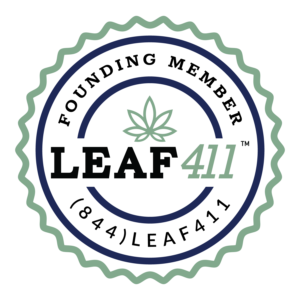 If all else fails and you or your friends believe that you need professional help, call Poison Control at 1-800-222-1222. You can also get help online through a chat function. Have a list of other medications you are taking.
If all else fails and you or your friends believe that you need professional help, call Poison Control at 1-800-222-1222. You can also get help online through a chat function. Have a list of other medications you are taking.
Also check out Leaf411, a free nurse hotline that operates Monday-Friday from 9 a.m. to 7 p.m. Mountain Standard Time. The nurses are available on Saturday and Sunday by request. It’s a great first call for information and advice on all kinds of cannabis products, affiliated businesses, clinicians and support groups.
Don’t give up on cannabis after one bad experience
Cannabis is a safe, useful drug when it’s used responsibly. But like any drug, you must respect it. Educate yourself, learn your tolerances, and use it wisely for a pleasant, enlightening experience. Connoisseurs of fine wine don’t guzzle the whole bottle. Think if it like that. Go slow and enjoy the experience.
When most new users overdose, it’s because edible cannabis takes about two hours to hit you. When it does, it’ll be a different feeling from what you’re used to if you’ve only ever smoked or vaped. Smoking and eating cannabis release two different kinds of THC into your blood. When ingested, THC converts to 11-hydroxy-THC which causes a stronger hallucinatory and bodily effect.
Many experienced cannabis users have had one bad experience, but seldom do they report a second. The worst part of a bad experience is that it takes you by surprise. Once you know what to expect – and how to avoid it -- you can adjust your intake. It takes a little trial and error.
The old saying start off “low and slow” is great advice. Begin with a tiny dose of about 2.5 mg, wait two hours and see what that does. After a day or two, up the dose to 5 mg. Then to 10 mg. Every person’s reaction to cannabis is different. Some have higher tolerance than others. Find the dose that suits your body.
Help to ensure a pleasant experience by purchasing edibles from a licensed dispensary. These products go through lab testing to ensure consistent doses thanks to industry innovators who advocated for having this standard. Always buy from an experienced, trustworthy company that prioritizes customers’ safety and positive experiences.
10 Ways Cannabis Is Safer Than Alcohol
New findings from cannabis research hit the press often these days, and the results typically confirm the therapeutic benefits of cannabis. Now that most states have legalized cannabis or are moving in that direction, more and more people have the freedom to choose between alcohol and cannabis consumption. There’s really not much of an argument as to which is safer, especially when consumed in large amounts, yet it’s helpful to know how these two substances compare in this regard. Read on to learn 10 ways cannabis is safer than alcohol.
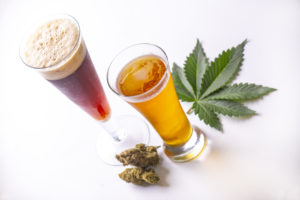
10. Cannabis is prescribed to help people. Doctors are prescribing medical marijuana for its therapeutic benefits that help all sorts of ailments such as chronic pain, loss of appetite, PTSD, autism, and autoimmune disorders, to name a few. When was the last time you recall a doctor writing a prescription for vodka or a few beers? Exactly.
9. Cannabis does not increase the rate of obesity. Obesity is an epidemic in the United States. Alcohol contains empty calories and lacks any nutritional value, so it’s no surprise that research has found heavy use leads to an increase in adipose tissue, therefore to an increase in obesity.
8. Cannabis can help depression and anxiety. Alcohol is known to the central nervous system as a chemical depressant, yet many depressed and anxious people reach for alcohol to help themselves feel better in the moment. This only worsens the condition over time, potentially leading to suicide. While the overuse of cannabis can be an exacerbator, when used moderately it has been found to provide relief.
7. Beneficial effect on brain cell growth. Studies have shown that cannabis use stimulates neurogenesis, the production of new brain cells. This is the opposite effect that alcohol has on the brain and is the opposite point of view the public has been trained to think.
6. Cannabis is less addictive. Alcohol abuse and alcoholism is not just a psychological dependence, but also an actual biological addiction. Withdrawal symptoms can be lethal. There are approximately 2.1 million members worldwide in Alcoholics Anonymous, an organization that helps save many from alcohol addiction and abuse. This speaks volumes. There has yet to be any science that shows cannabis is an addictive substance.
 5. Cannabis use is not associated with aggressive behavior, violence, or violent crimes. According to a study published on domestic abuse, alcohol consumption is associated with significant increases in the daily likelihood of physical aggression, especially male-to-female aggression. The effects of alcohol abuse on human aggression and violence are concluded from statistics involving people who were at various levels of intoxication at the time of the aggressive or violent activity. Violent crimes such as murder, rape, and assaults are pervasive in individuals with excessive alcohol use that are diagnosed as alcoholics, as well as those that do not fulfill the psychiatric criteria of an alcoholic.
5. Cannabis use is not associated with aggressive behavior, violence, or violent crimes. According to a study published on domestic abuse, alcohol consumption is associated with significant increases in the daily likelihood of physical aggression, especially male-to-female aggression. The effects of alcohol abuse on human aggression and violence are concluded from statistics involving people who were at various levels of intoxication at the time of the aggressive or violent activity. Violent crimes such as murder, rape, and assaults are pervasive in individuals with excessive alcohol use that are diagnosed as alcoholics, as well as those that do not fulfill the psychiatric criteria of an alcoholic.
4. There is much less risk of injury. The harmful use of alcohol is a causal factor in more than 200 disease and injury conditions. Drinking alcohol impairs both physical and mental abilities while decreasing inhibitions. It is associated with a risk of developing health problems such as mental and behavioral disorders, including alcohol dependence, major diseases such as liver disease, some cancers and cardiovascular diseases, as well as injuries resulting from violence and traffic accidents and collisions. Sure, there are people who may drive high and cause an accident, but drunk drivers are far more common.
3. Cannabis use is not linked to cancer. Conversely, it has been shown to treat cancer and have antitumor effects. What about lung cancer, you ask? Researchers have yet to prove either way if cannabis causes lung cancer. Any smoke that is inhaled contains toxins and other carcinogens. Carcinogens are substances that are known to cause cancer, and these substances are produced whenever something burns. So, when it comes to smoking cannabis, the potential for lung damage does exist. Alcohol, on the other hand, increases the risk of developing cancer.
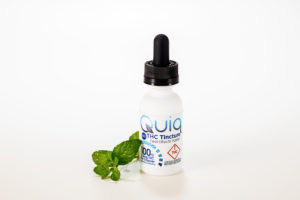 2. There is no risk of lethal overdose. As with any substance, you can absolutely overdo it, but death from a high dose of cannabis isn’t possible as it is with alcohol and many other substances. There haven’t been any reported deaths resulting solely from cannabis use. The primary psychoactive compound of the cannabis plant, THC, has an extremely low toxicity, posing no threat of death. It’s important to note that cannabinoids and other molecules in cannabis can affect the metabolism of pharmaceutical drugs, which can lead to drug toxicities by these medications within the body. Here’s a list of medications that are known to interact with cannabis.
2. There is no risk of lethal overdose. As with any substance, you can absolutely overdo it, but death from a high dose of cannabis isn’t possible as it is with alcohol and many other substances. There haven’t been any reported deaths resulting solely from cannabis use. The primary psychoactive compound of the cannabis plant, THC, has an extremely low toxicity, posing no threat of death. It’s important to note that cannabinoids and other molecules in cannabis can affect the metabolism of pharmaceutical drugs, which can lead to drug toxicities by these medications within the body. Here’s a list of medications that are known to interact with cannabis.
1. Death toll from cannabis is zero. Death toll is one of the biggest tell-tale indicators of danger. According to the WHO, there are 3 million alcohol-related deaths annually worldwide, this is 5.3% of ALL deaths. Not only that, let’s look at binge drinking and college students. Recent statistics from the National Institute on Alcohol Abuse and Alcoholism (NIAAA) indicate that each year drinking by college students contributes to an estimated 1,519 student deaths, 696,000 assaults by students who had been drinking, and 97,000 cases of sexual assault and date rape.
As you can see, cannabis is far less harmful than alcohol, plus it contains a range of beneficial properties. Any intoxicant carries with it the potential to be abused and the old adage, everything in moderation, is just as relevant here. For most people, modest use of cannabis or alcohol are both pretty safe. Yet overall, history, data, and subjective experience supports cannabis as the safer of the two. Do yourself a favor: to protect your liver and your lungs, consider edibles the next time you're shopping at a dispensary.
Everything You Need To Know To Safely Consume Cannabis
Cannabis products can work wonders for your mental and physical wellbeing; but overconsumption can cause some uncomfortable effects, like paranoia and anxiety. However, those circumstances can be easily avoided by being an educated user. Here's everything you need to know for safe consumption.
 First things first, let’s start with the stars of the show. The first is tetrahydrocannabinol, better known as THC, the psychoactive component responsible for the high. The greater the number of milligrams, the stronger the dose. A microdose is typically considered to be 2.5mg, and while this can be a bit much for some people, it may be an inconsequential amount to others. The second star is cannabidiol, CBD. When CBD is part of the show, it acts to subdue some of the psychoactive effects of THC, so an equal ratio of THC to CBD typically results in a smooth and more balanced experience. Consuming CBD on its own does not induce a “high”, rather most people feel calm and relaxed in the body with very little effect on the mental faculties.
First things first, let’s start with the stars of the show. The first is tetrahydrocannabinol, better known as THC, the psychoactive component responsible for the high. The greater the number of milligrams, the stronger the dose. A microdose is typically considered to be 2.5mg, and while this can be a bit much for some people, it may be an inconsequential amount to others. The second star is cannabidiol, CBD. When CBD is part of the show, it acts to subdue some of the psychoactive effects of THC, so an equal ratio of THC to CBD typically results in a smooth and more balanced experience. Consuming CBD on its own does not induce a “high”, rather most people feel calm and relaxed in the body with very little effect on the mental faculties.
Now it’s helpful to get clear on why you are consuming cannabis so you can choose the right form and method. Are you looking to alleviate a physical symptom that creates chronic pain or disability in your body? Or to sleep better or ease mental/physical stress such as tension or anxiety? Perhaps to feel a heightened connection with your spiritual nature? Or to simply elevate your experience of life? There are many reasons to consume and depending on your why, you may prefer Cannabis sativa or Cannabis indica, or a hybrid of both. Leafly does a great job of explaining the differences.
Now that you’re clear on your why, let’s talk about the what and how much. Cannabis is a substance in a league of its own, and affects everyone differently depending upon aspects such as the strain, the growing conditions of the plant, the delivery method, the overall physical makeup of the person consuming it, and the dose. A dose is the amount of the active constituents in a given product to be taken at one time, such as THC and/or CBD. Since each person will have a unique response, it’s important to spend some time to figure this out for yourself - no one can tell you with certainty how you will feel. Here’s a great resource for important general guidelines to best determine what dose and method to start with to safely consume.
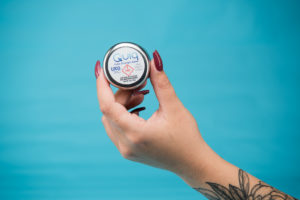 Below are the primary consumption methods, as well as some considerations to be aware of for each.
Below are the primary consumption methods, as well as some considerations to be aware of for each.
• Edibles (chocolates, gummies, tinctures, pills/capsules, full-spectrum oil, sprays): Edibles typically kick in between 45 and 60 minutes, sometimes up to 90 minutes after ingestion and last up to three to four hours, depending on the dose size and whether the stomach has food in it. Ideal for sustained effects, but know your dosage for safe consumption.
• Inhalation (vaping, dabbing, and smoking cannabis): Initial effect is within minutes, and peak effect in 20 to 30 minutes. The psychoactive effects diminish within 2 to 3 hours. Inhalation can be irritating to the lungs, but if you’re looking for a quick onset, this is an ideal option.
• Topicals (creams, salves, patches): These are absorbed through the skin and are ideal for localized issues. They are typically used to treat pain and are not ideal if you’re simply desiring to feel high. Patches release the dose over an extended period of time.
• Suppository (rectal, vaginal): Yes, you heard right! This consumption method is absorbed internally, not systemically, and has been reported not to cause intoxication. Learn more about suppositories for safe consumption here.
A rule of thumb for cannabis consumption is to “start low, go slow, then wait”. What this means is to consume a small amount at first in order to gauge your tolerance, then allow enough time to pass, 60-90 minutes, to see how you feel before taking an additional dose. Here are a couple of hacks to keep in your back pocket in case you accidentally consume too much.
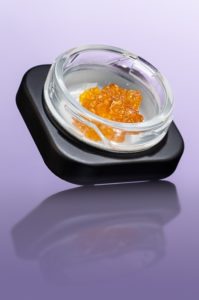 First, CBD has been known to attenuate the effects of THC (try a high-quality, reputable brand such as trupura CBD). Second, as strange as it sounds, suck on a black peppercorn. According to Weedmaps, in a 2011 review published by the “British Journal of Pharmacology,” researchers found that terpenes such as beta-caryophyllene, found in high amounts in peppercorn, tend to create a calming effect via the endocannabinoid system. Check out Safe Cannabis Use for more information on delivery methods.
First, CBD has been known to attenuate the effects of THC (try a high-quality, reputable brand such as trupura CBD). Second, as strange as it sounds, suck on a black peppercorn. According to Weedmaps, in a 2011 review published by the “British Journal of Pharmacology,” researchers found that terpenes such as beta-caryophyllene, found in high amounts in peppercorn, tend to create a calming effect via the endocannabinoid system. Check out Safe Cannabis Use for more information on delivery methods.
Also, it is less common, but some people lack the necessary enzyme in their liver to process THC when ingested through edibles. After being digested by the stomach, a more potent form of THC, 11-hydroxy-THC, which is a metabolic byproduct, is created as the THC is processed by the liver and GI tract. You’ll know you are one of these people lacking the enzyme to convert the THC to 11-hydroxy-THC if no matter how big the dose or how long you wait, you feel nothing. In this case, you’ll likely favor an inhalation method.
One final note to consider is instead of making homemade edibles, choose professionally-made, lab-tested edibles so you know how many milligrams you've consumed. Nearly all homemade edibles have an uneven distribution of cannabis throughout, so you truly will not know how much you’re consuming. It makes a BIG difference.
**Medical marijuana and cannabis products are not regulated by the United States Food and Drug Administration at this time. If you are pregnant or nursing, please visit the Centers for Disease Control and Prevention to understand the risks of consuming cannabis.

